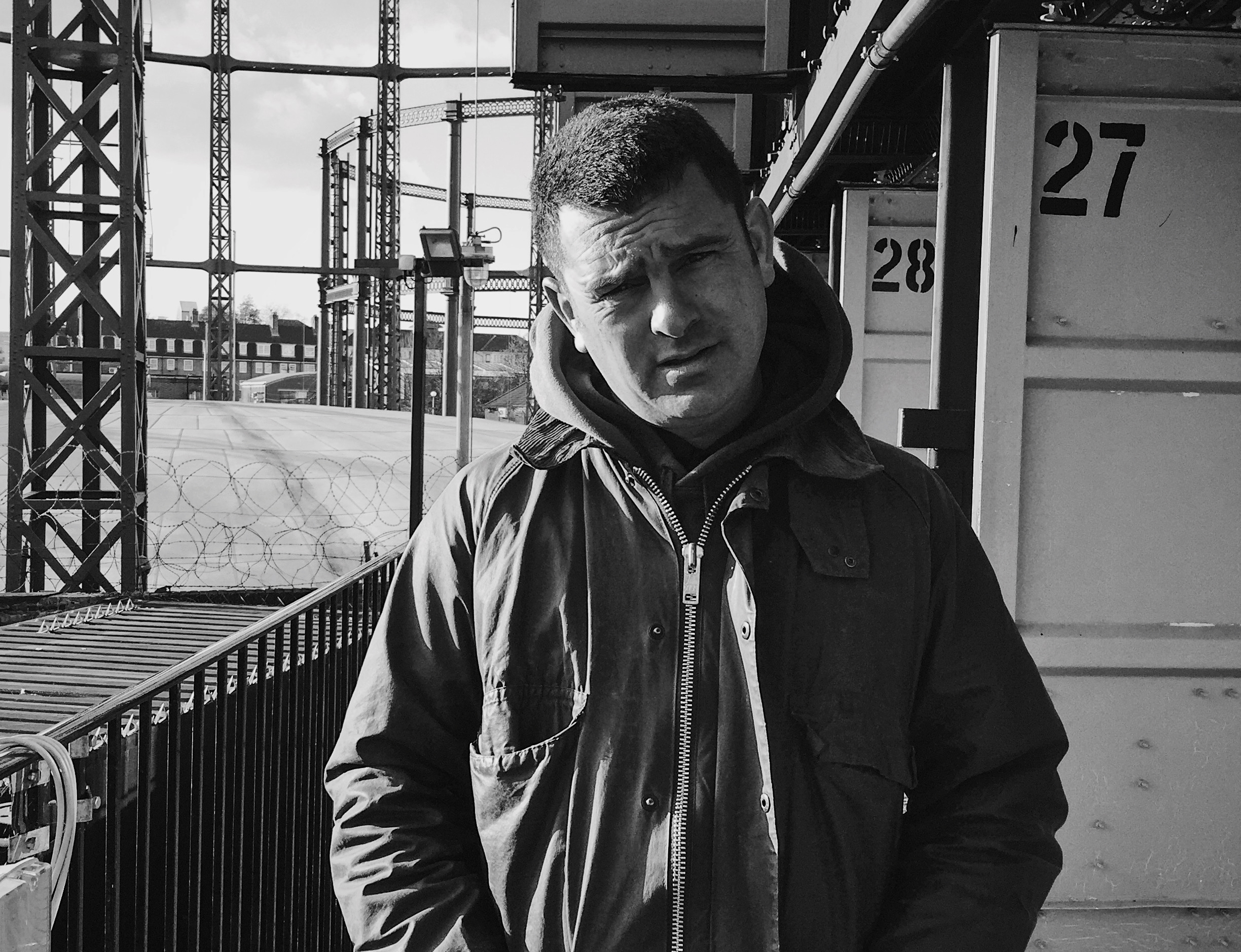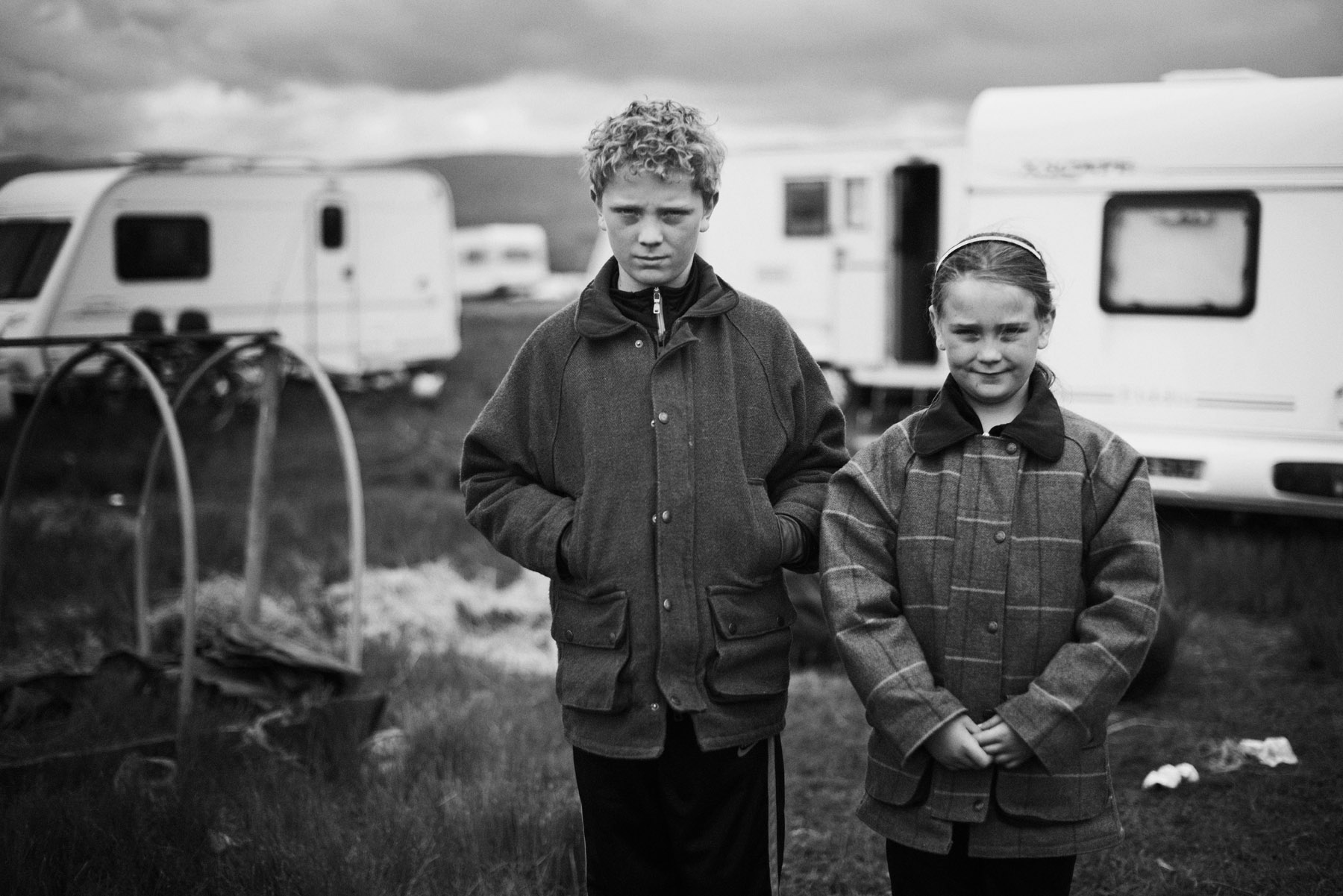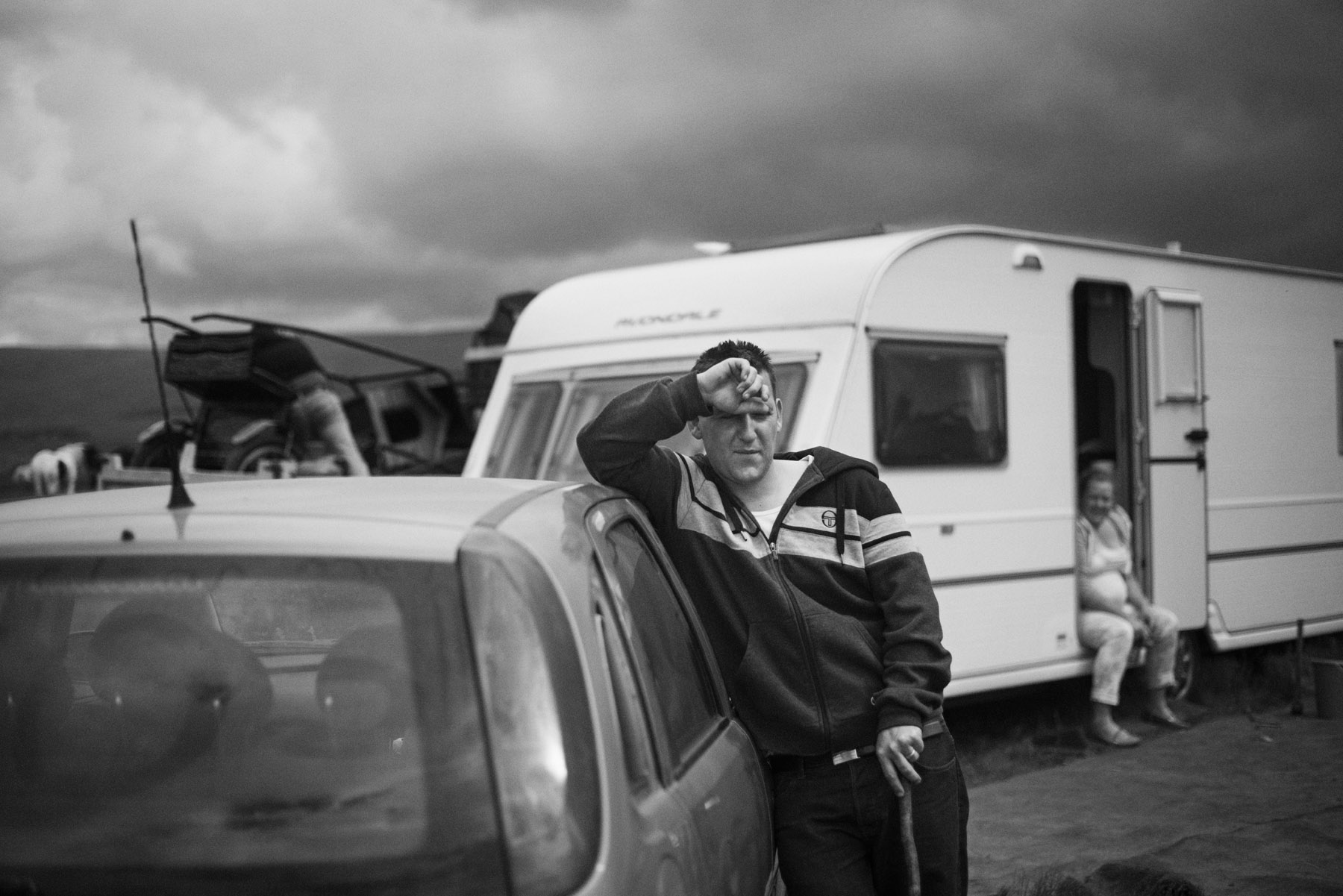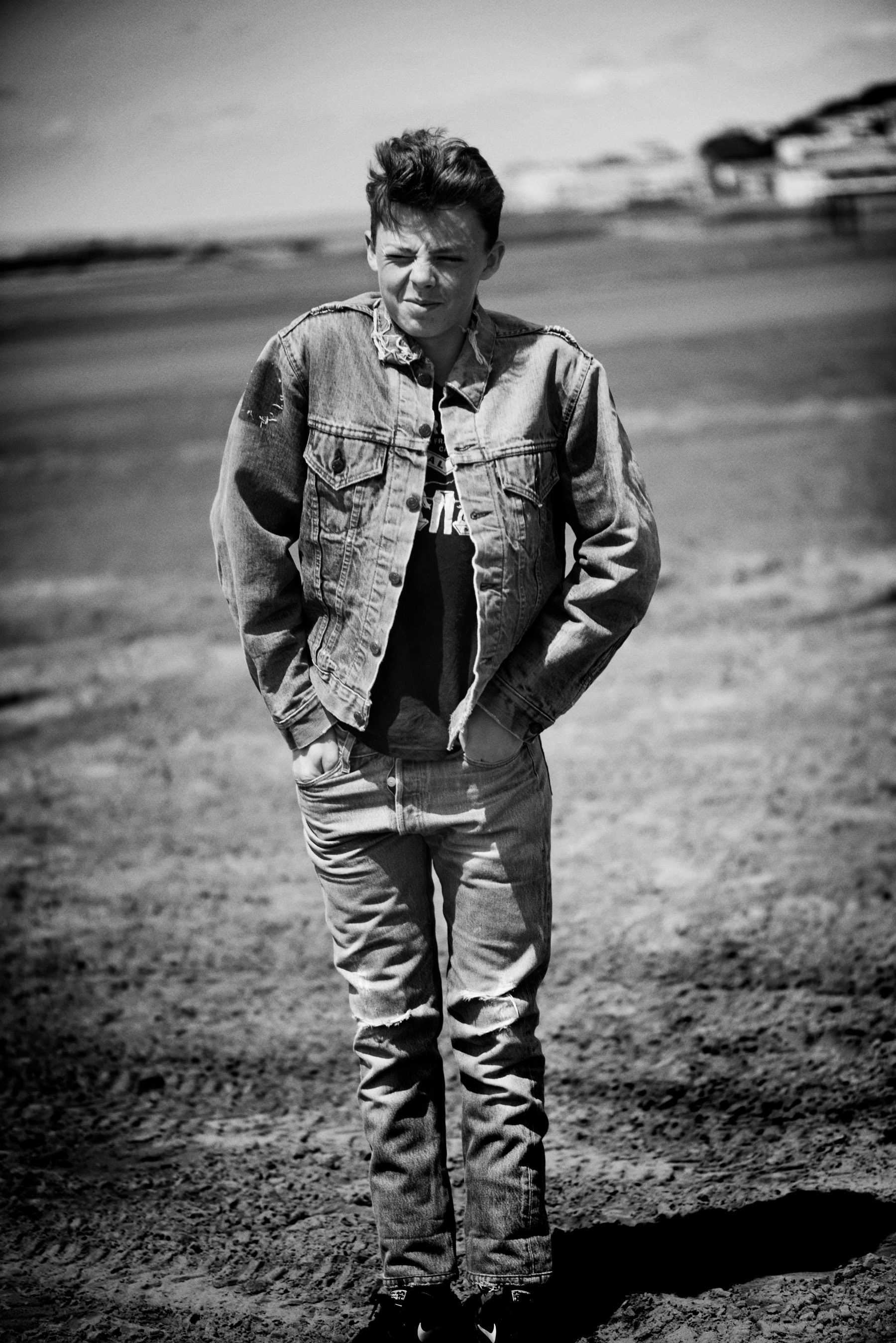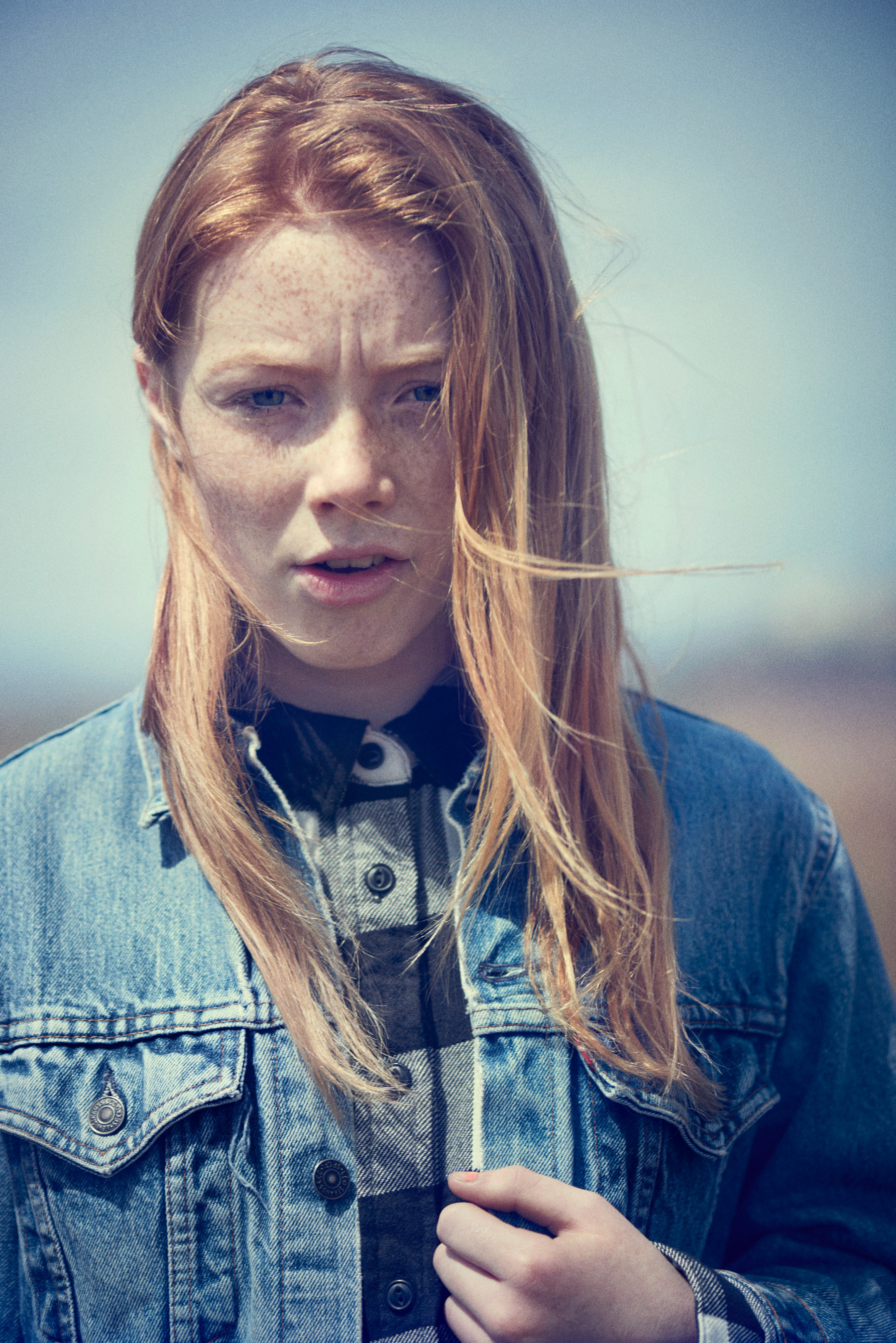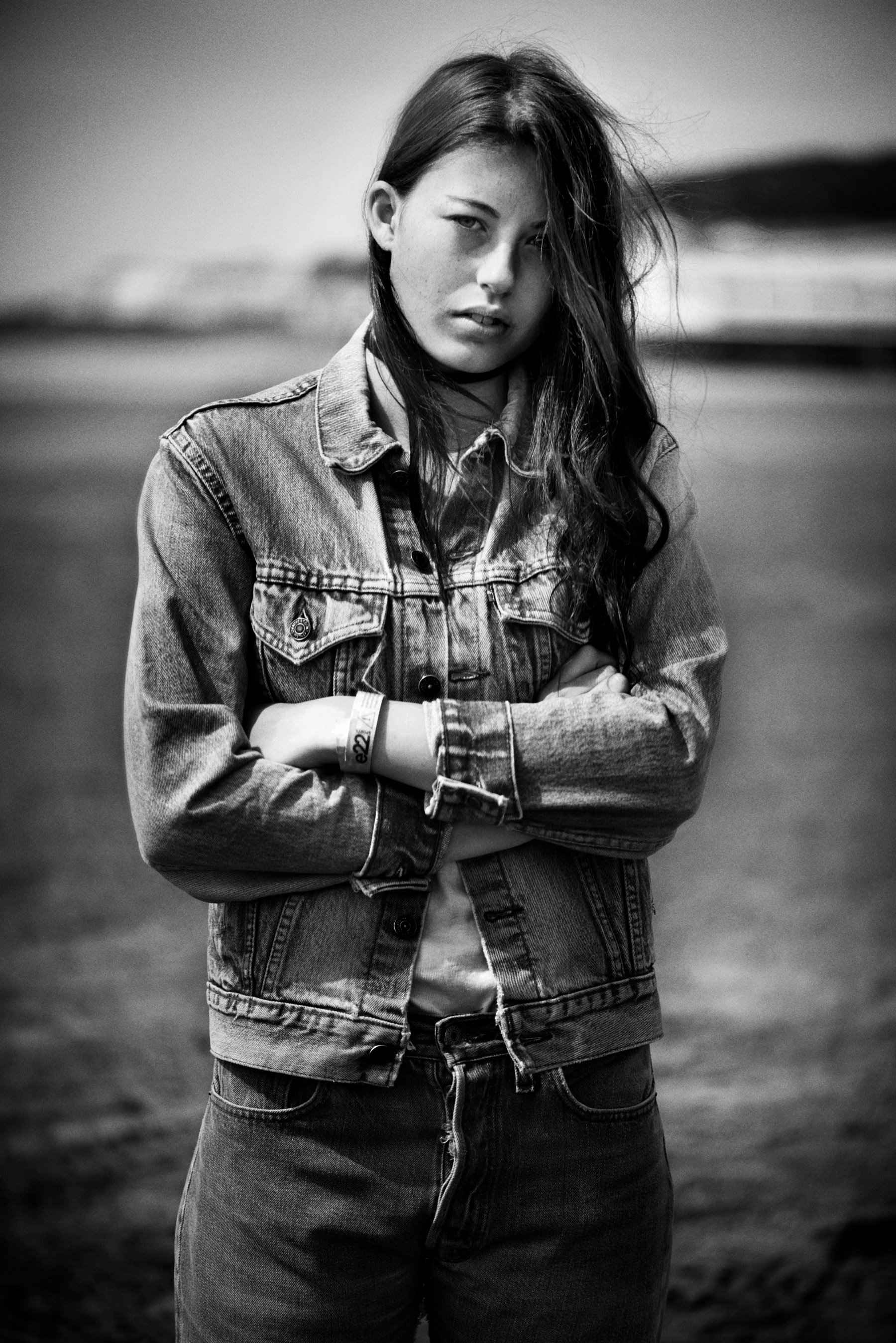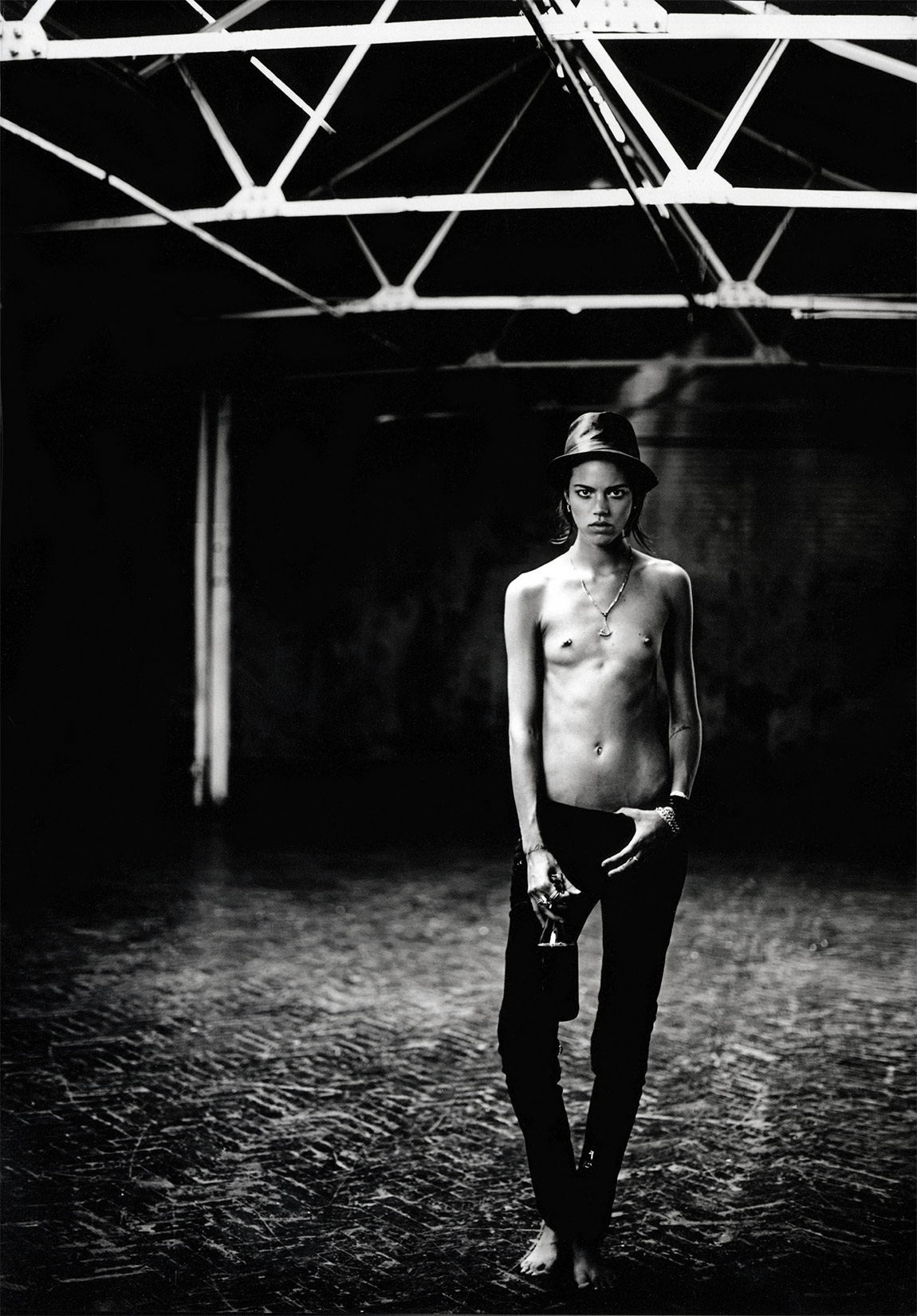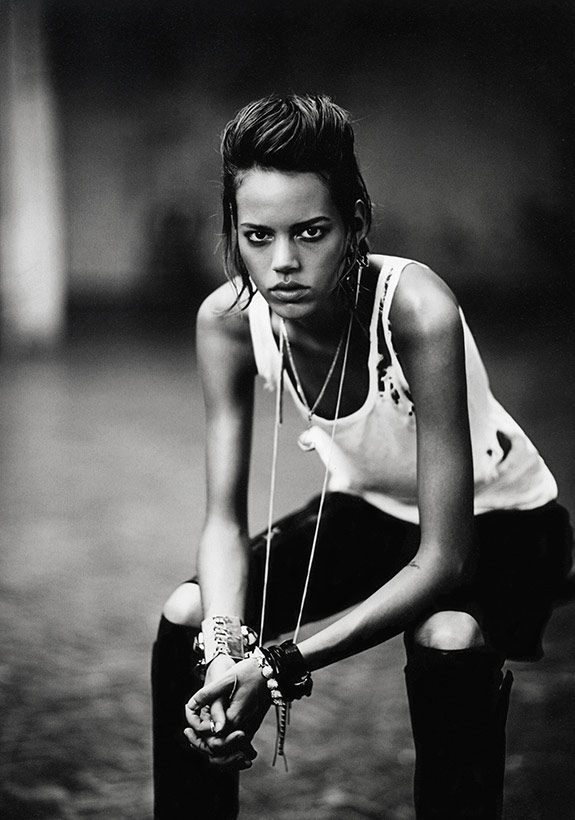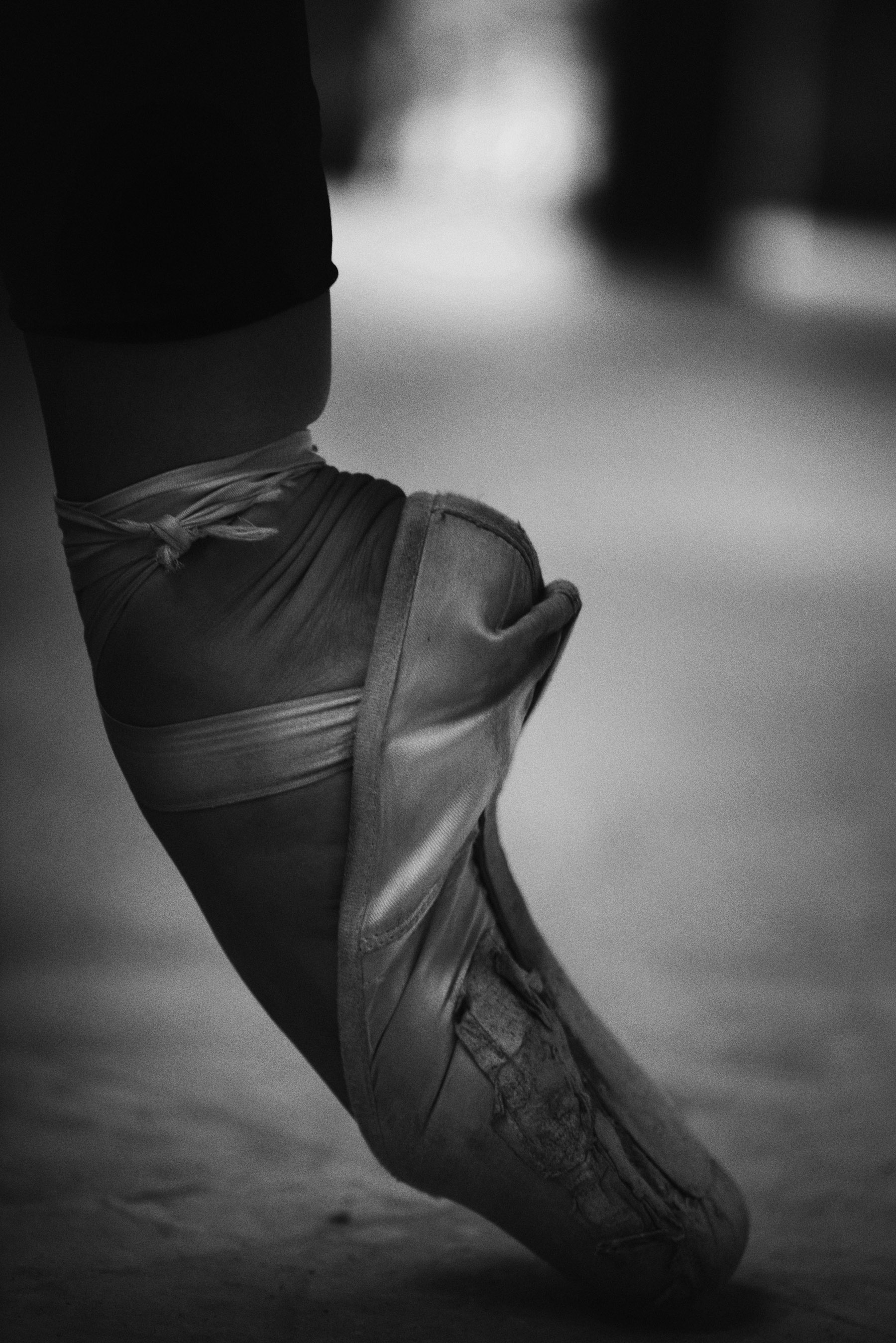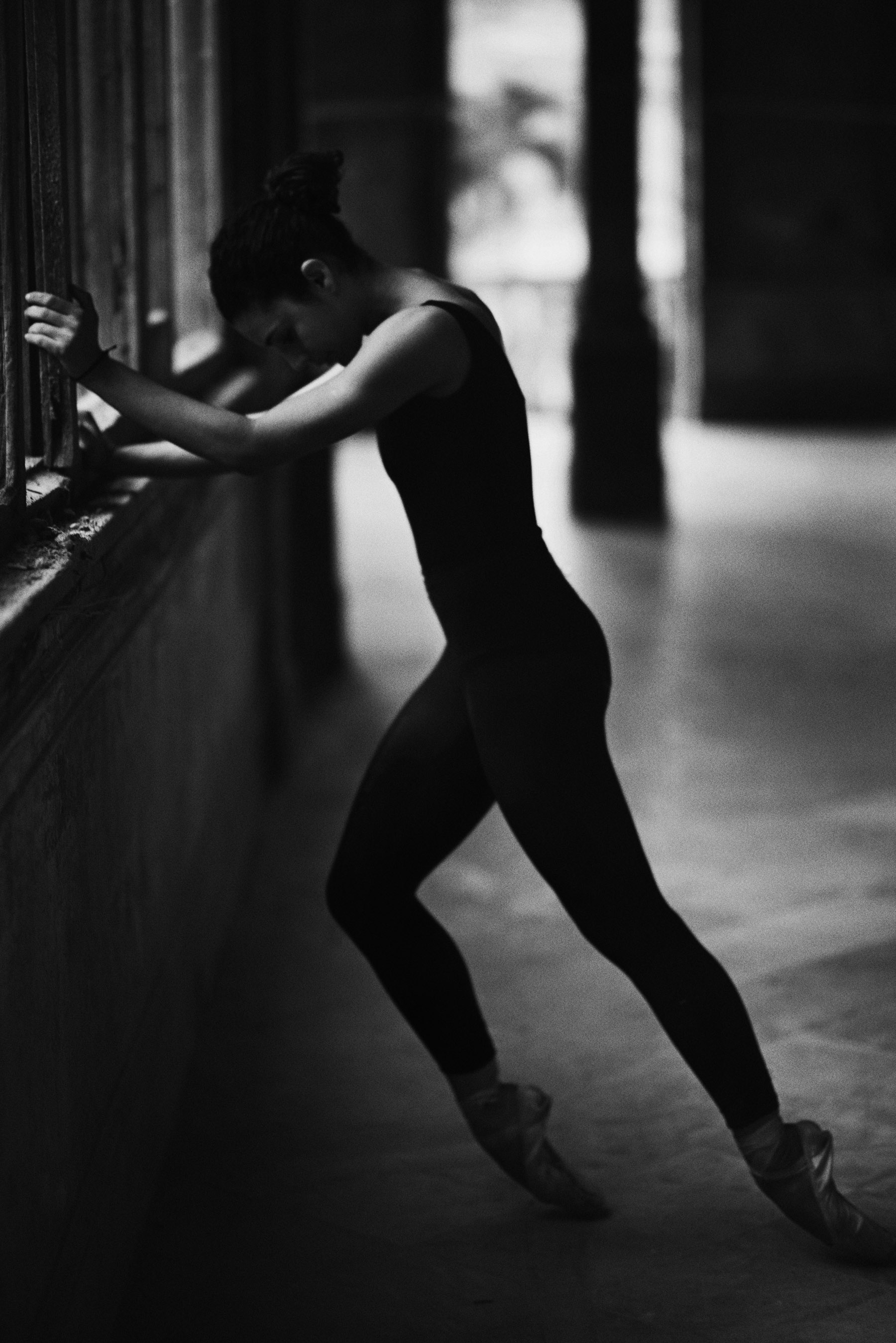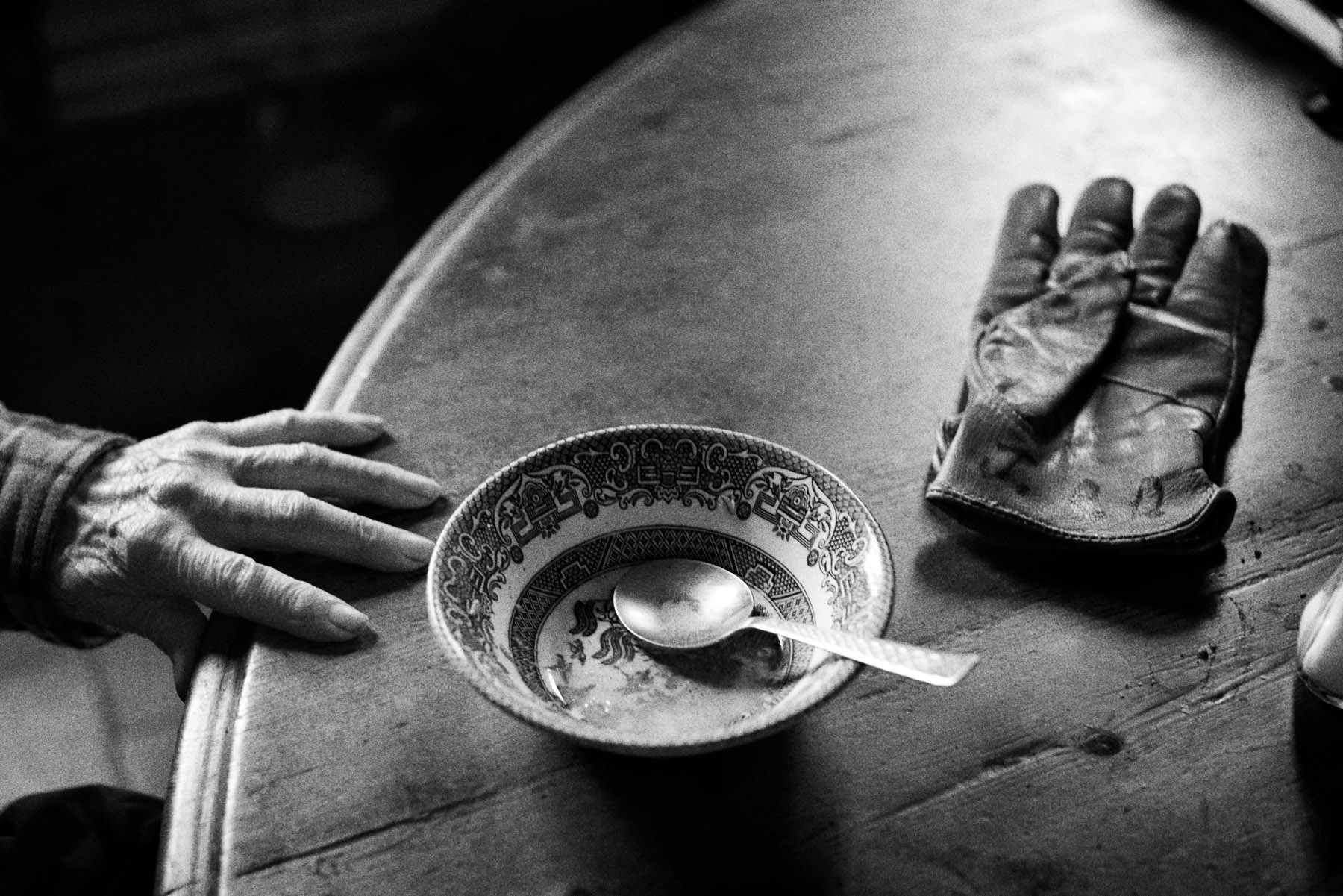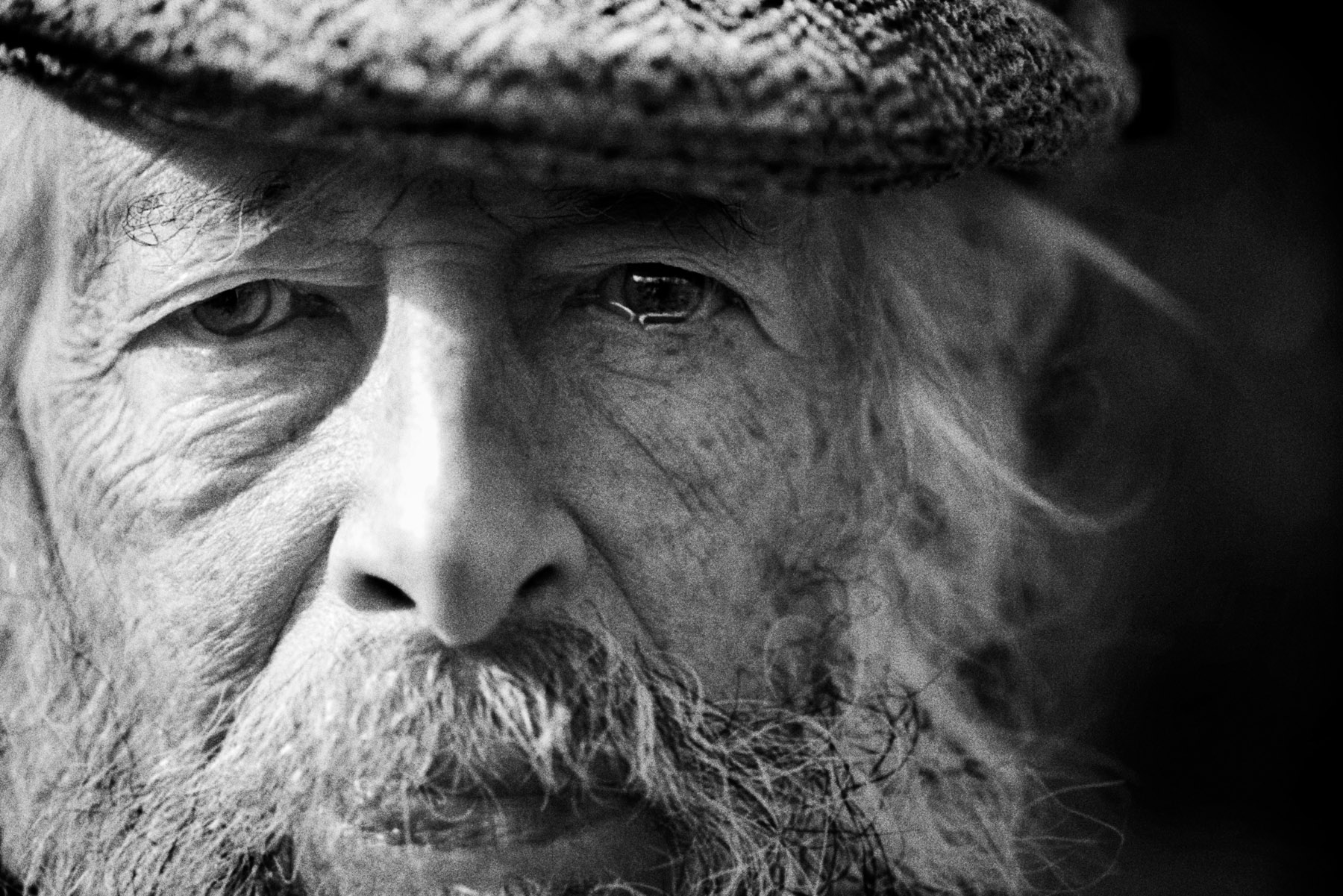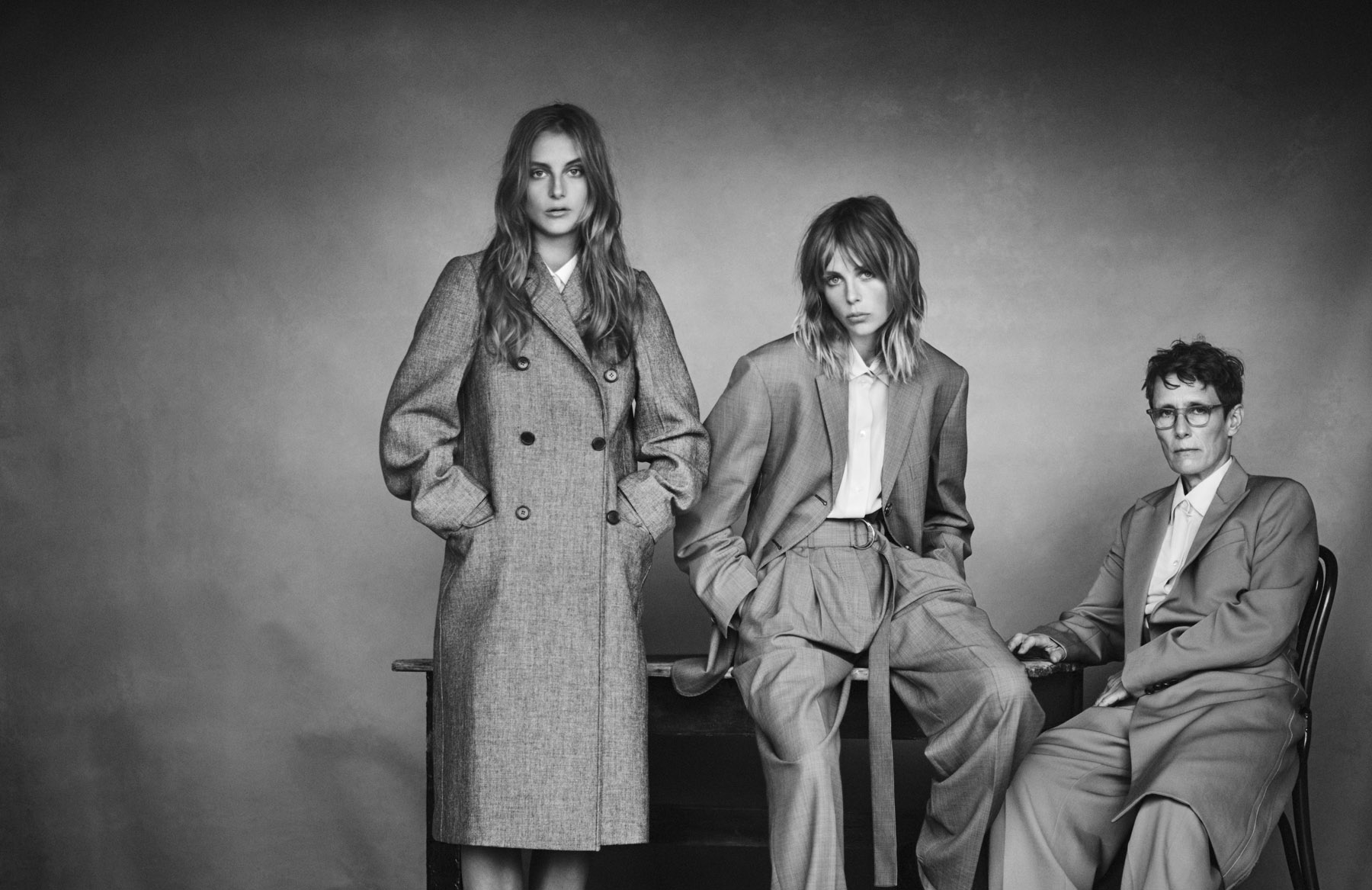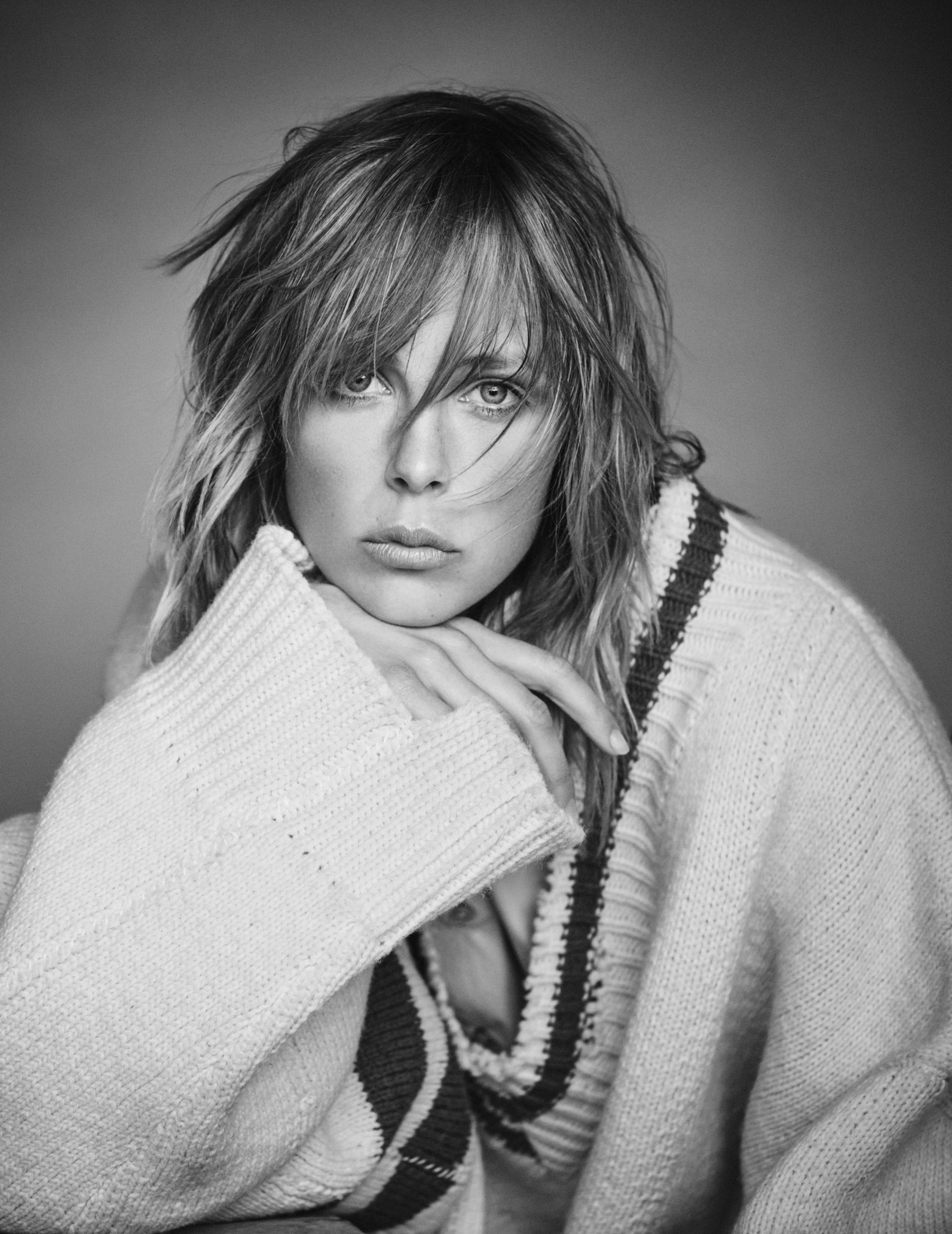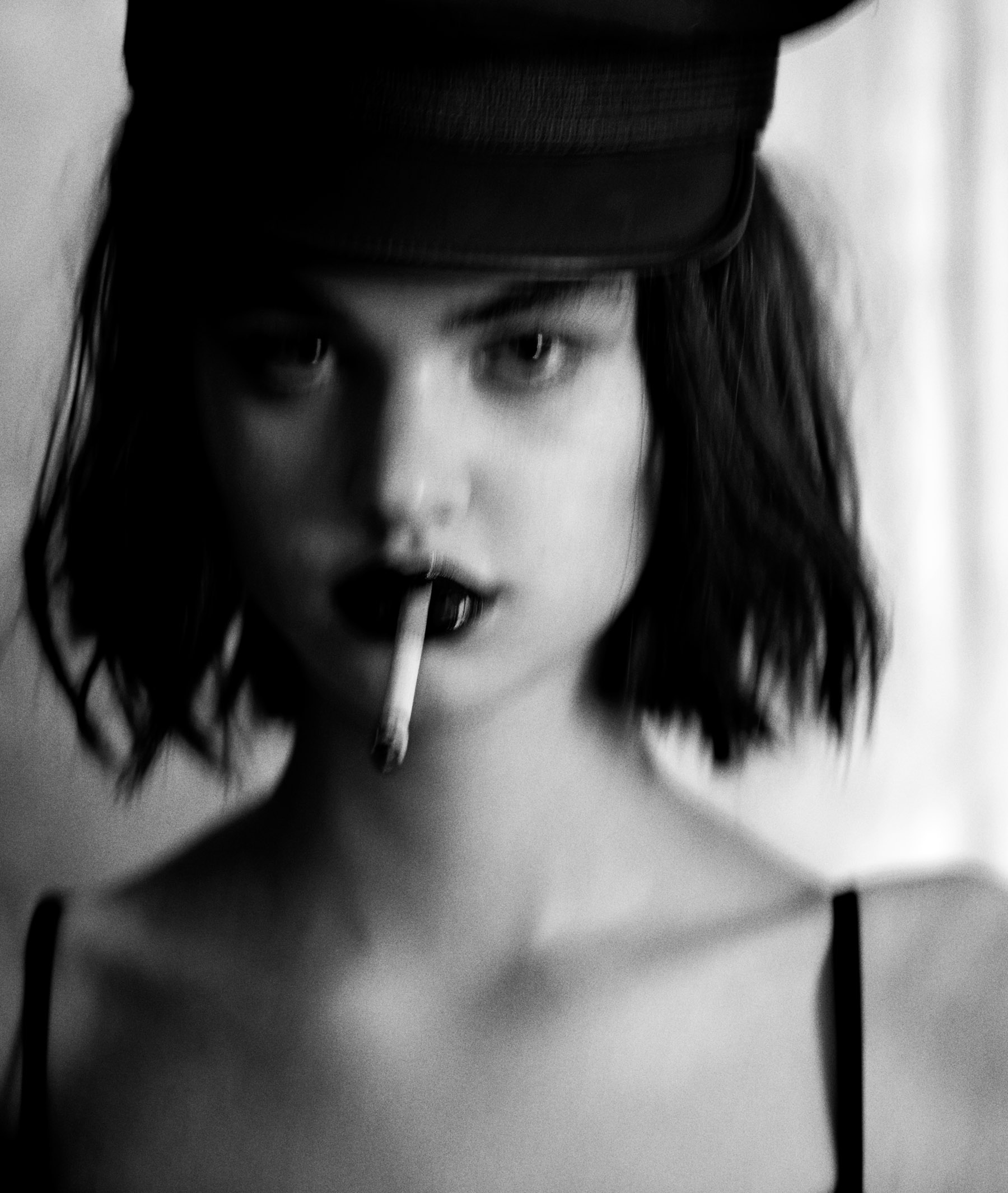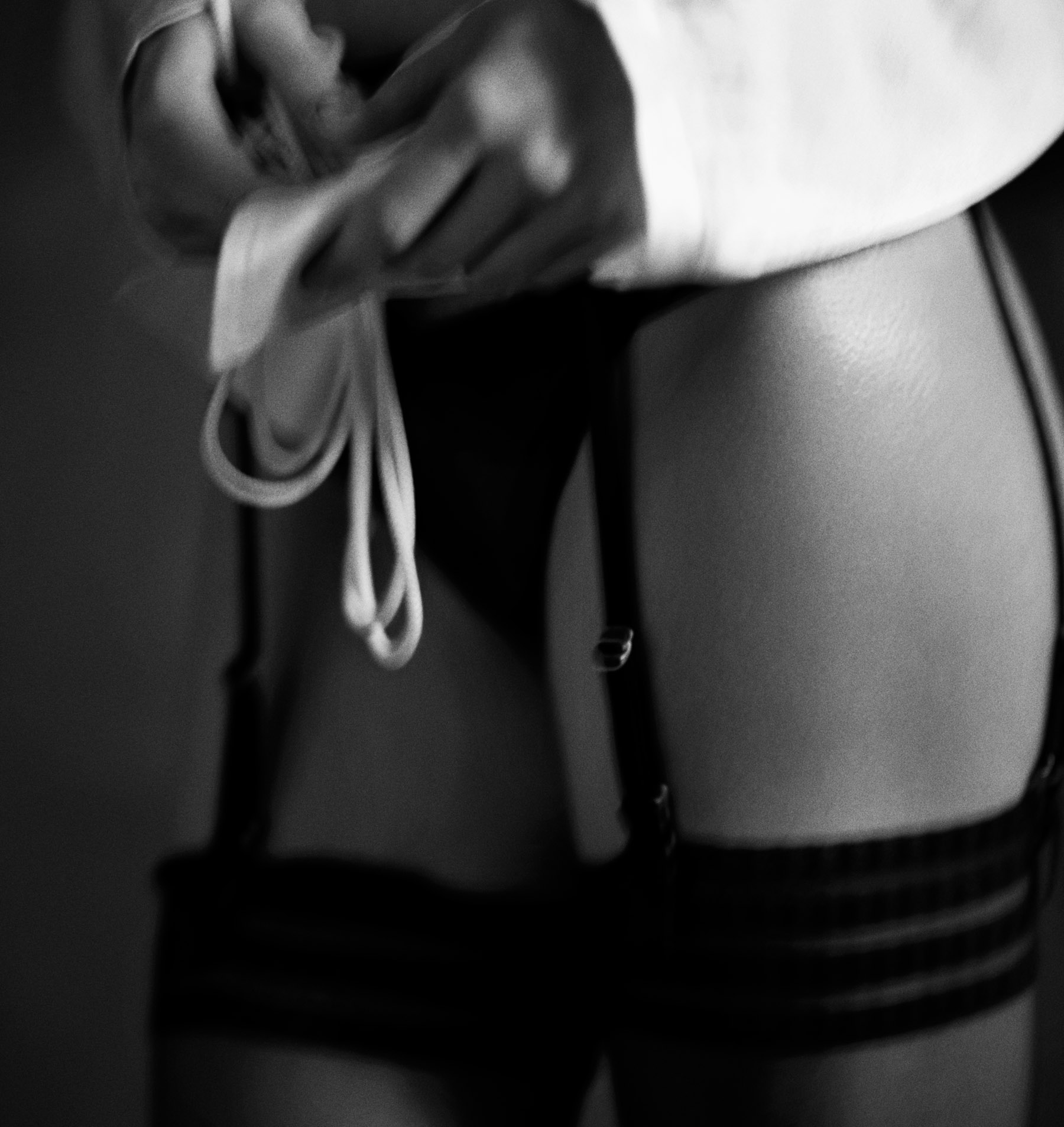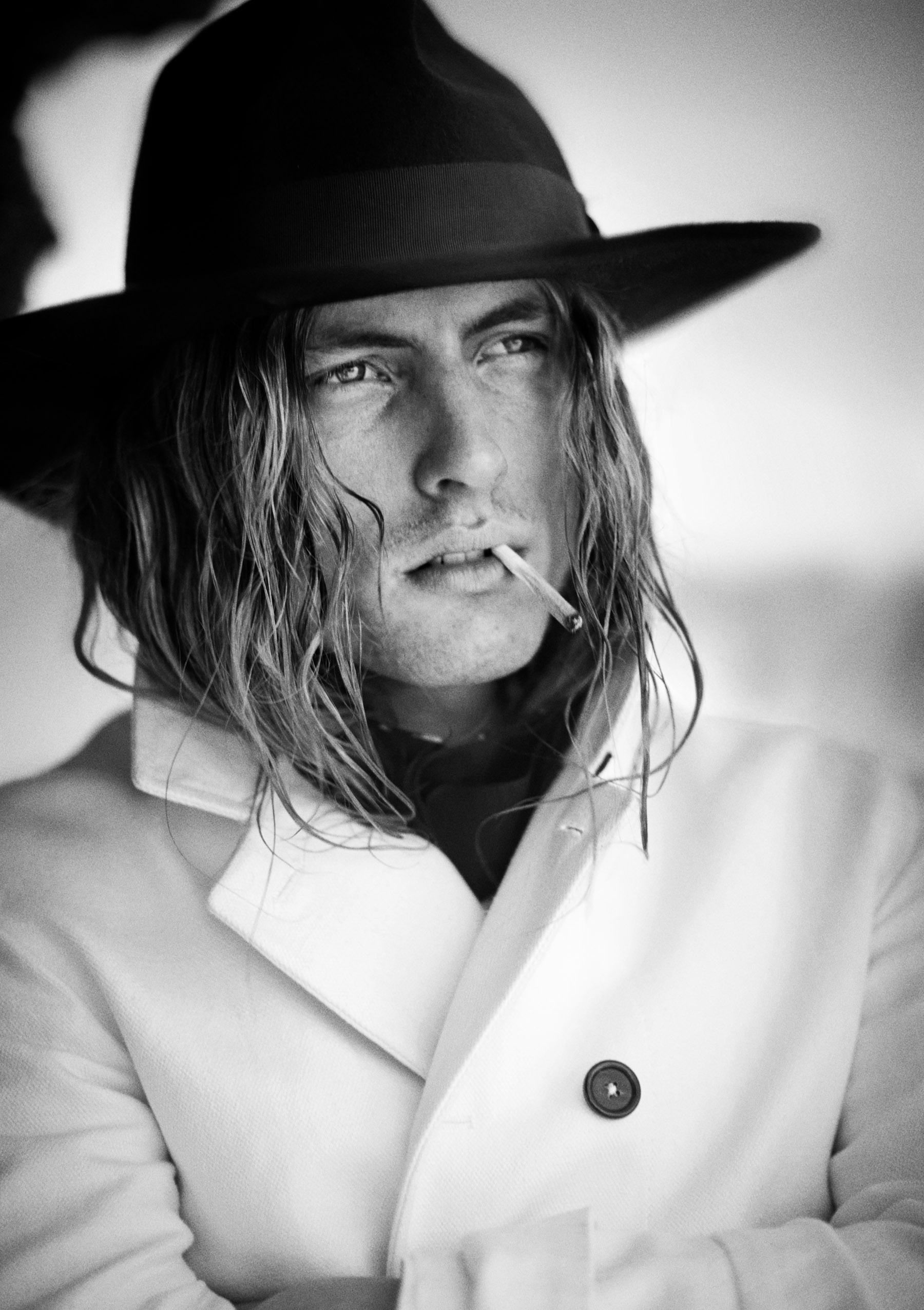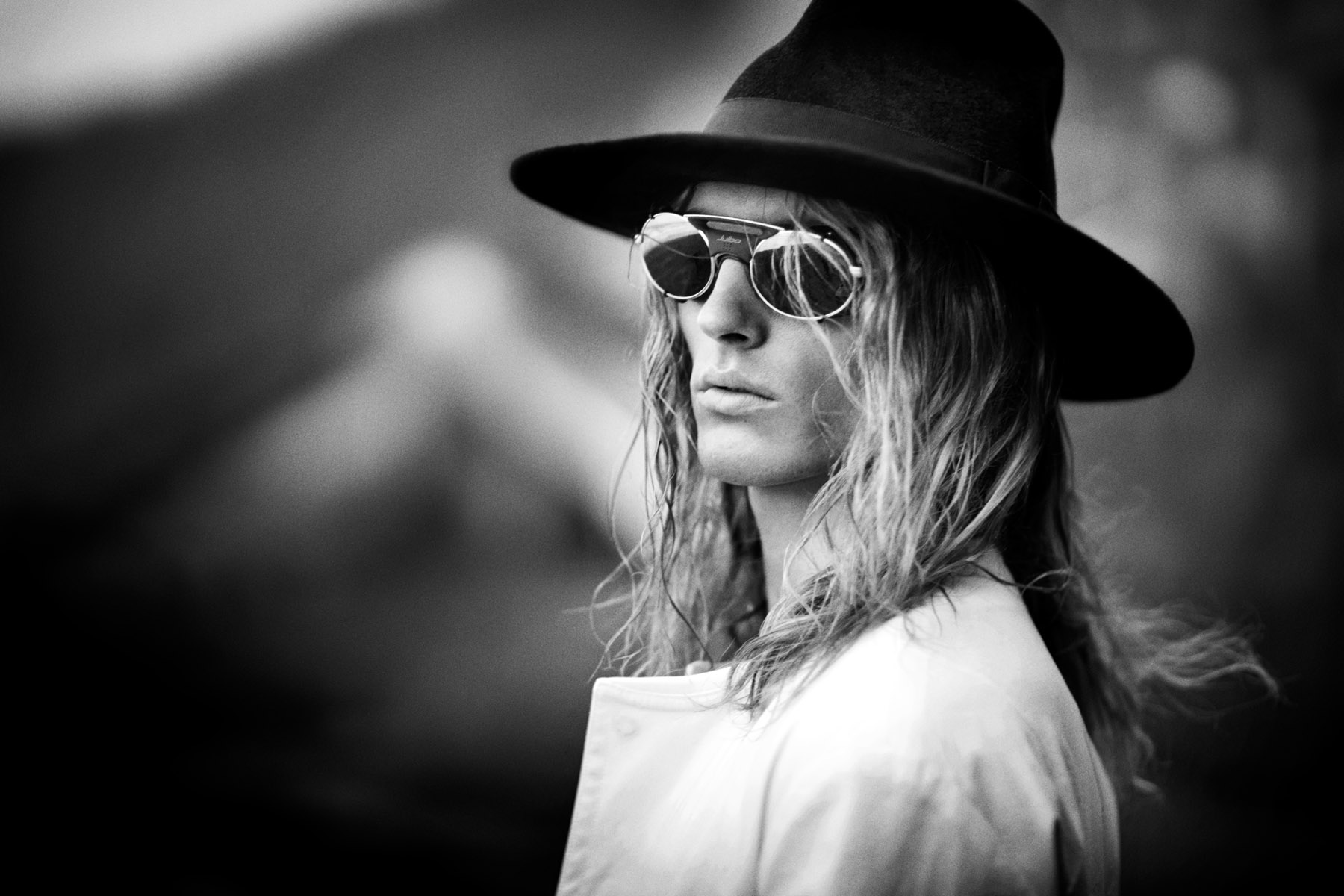Ever the consummate visual narrator, photographer Boo George’s vision is as rich and enchanting as his Irish brogue. With his panache to invent epics, he has left his name on the lips of fashion’s powerhouses as the next photographic champion of his generation. The Impression’s Kenneth Richard speaks with the raconteur about his thirst for knowledge and creating timeless moments.
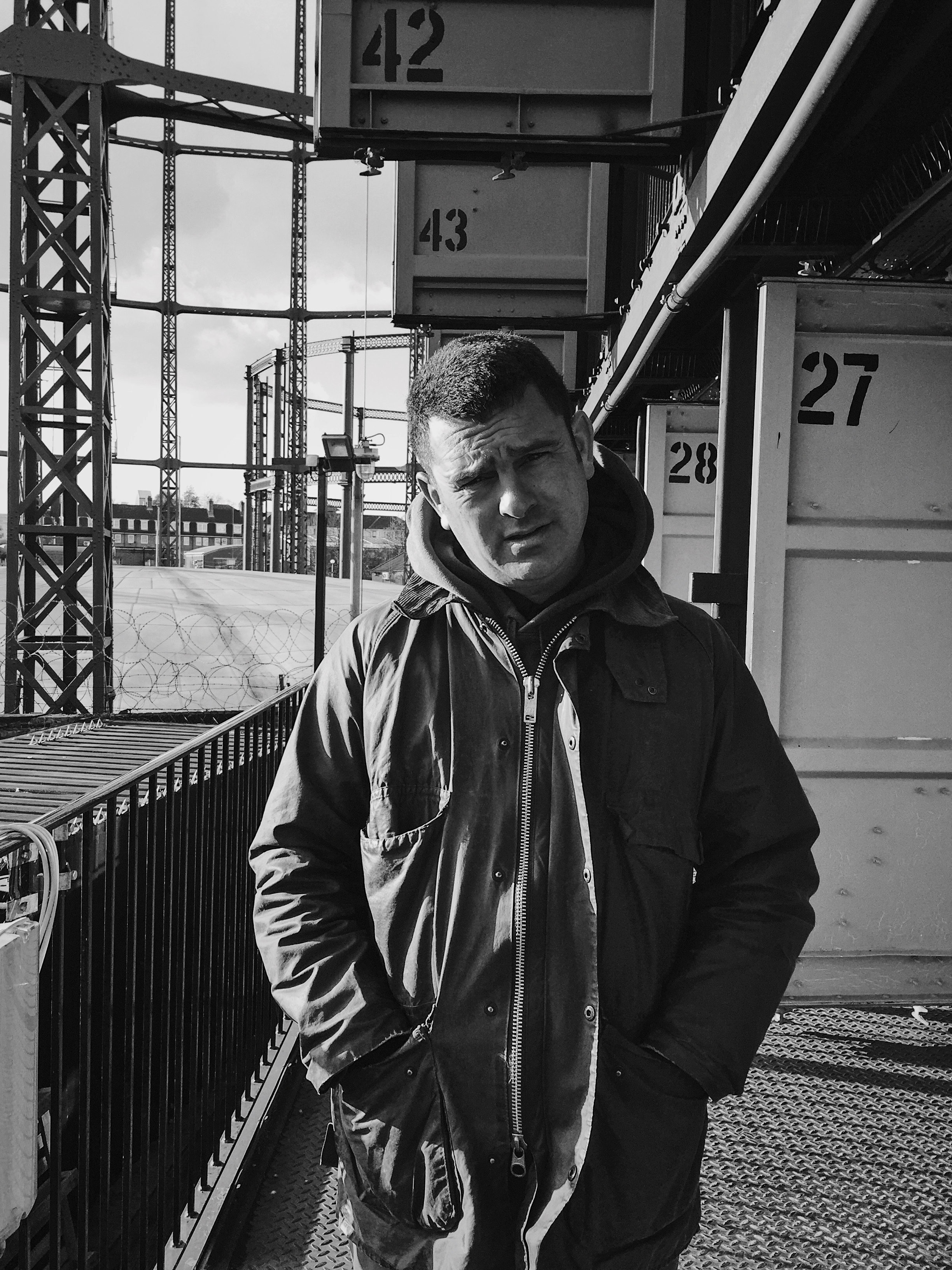
Kenneth Richard: Thanks for carving out a little time to share your adventures. What have you been up to over the holiday break?
I just went to see my mum in Dublin for a couple of days. Then my sister has been living on a big cattle farm temporarily, so I also went to see her. And I just bought a small cottage in the west of Ireland, in West Cork. So I was there playing with my new cooker – totally rock and roll. I was swimming most days, even though it was extremely cold. I was in the water in the sea, and I just took easy walks up the hills. Chewed the cud, as they say in Ireland.
Kenneth Richard: Did you have the whole family over?
No, just me and the dog in West Cork. I was making stews and chilling with him.
Kenneth Richard: Did you take any pictures?
I always take pictures. Took them with the iPhone, which is like a total cop-out.
Kenneth Richard: How do you like taking pics with the iPhone?
I know it’s recreational, but it’s fun! You just can’t control the f-stop or the shutter speed. In my case, the shutter speed I don’t care, but it’s the f-stop I’m more concerned about. But it’s amazing, it’s like, my phone. It’s brilliant, you know? It has changed the way we think over the last ten years.
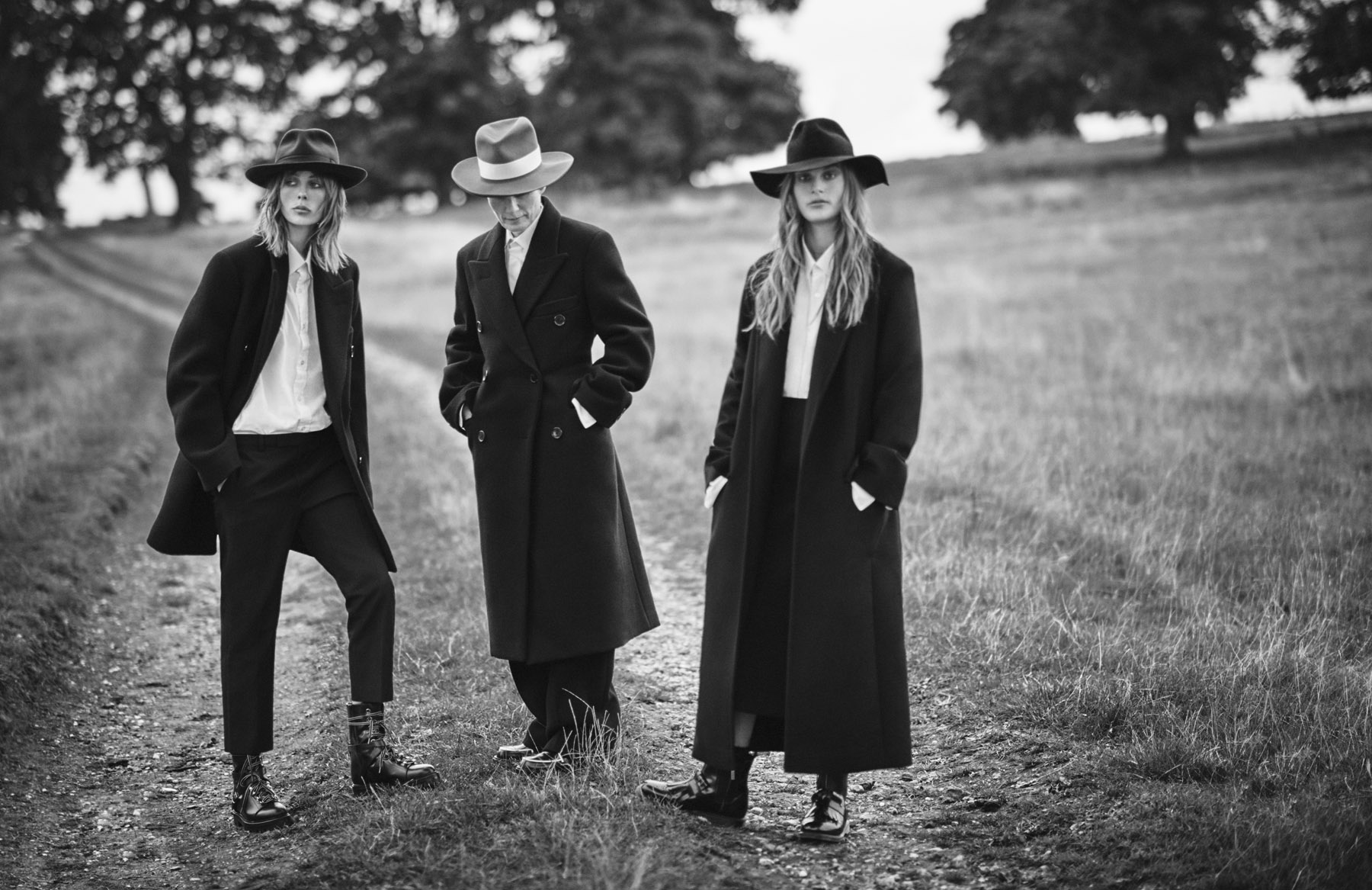
Kenneth Richard: Reminds me of the film to digital switch-up as you experienced that transition firsthand, right?
Yeah. I started by assisting a guy called Julian Broad. We used to shoot 5×4 film. My first job that I ever did, we went to Namibia to photograph Brad Pitt. 5×4, in the desert, one assistant. So you learn quickly, you really kind of have to adapt. I started to take photographs myself with Pentax 67. And I made a book on fishermen in the North Sea.
Kenneth Richard: Before you jumped to the high seas, how did your interest in photography start?
I did a media course in Ireland. And after I finished school when I was 17, 18, I started taking pictures. Then I did a foundation photography course.
Kenneth Richard: Was that always the plan, to go to school for photography?
My dad wanted me to do a business course. When I was back home, I was saying to my mum, ‘I’m awful, I’m terrible,’ at all that business stuff. And my friend’s mum said, ‘Boo, you’re good at talking; Owen is taking a media course.’ So I was like, ‘That’s brilliant! That’s right up my standard.’
So that’s kind of how it happened. I went to the media course; it was about filmmaking and photography, you know, the usual subjects in a foundation media course, and I just started taking photographs. That’s how it happened. From the foundation media course, I then took a foundation photography course. That’s when I started really getting into it, and then I started to photograph Irish Gypsies in the hills.
Perry Ogden did a book on them, and he made them look amazing. So I photographed competing caravans, children, and horses and that kind of thing. That’s how it happened. Then I found a scholarship to go to England for 3 years. So the English government paid for me to be here, and the Irish government paid for me to be in England. It was great. That’s how it kicked off; they needed to kick me to get this whole thing to come together. They told me to get away first.
Kenneth Richard: How was London in those early years?
London is amazing. London is the best city in the world, bar none! It’s great; I love it. It was very good to me. I obviously love New York and I love every city that I go to, but London is great. London is HQ.
What did those early years teach you in London? Had you been there before?
When I went to get my degree, it wasn’t in London, it was in the northeast of England. Actually, when I left, my mum was bosom and moved to England with me. I was kind of, not literally, but I was leaving her to move to England. And she was not really into this, so mum took a dilapidated car over to the northeast of England. It was very close agriculture. There was a lot of poverty and a lot of drugs.
I just wasn’t into it. I was not into being there. So I didn’t socialize that much with people – not that I was a hermit, I was very sociable, loved drinking points. But I wasn’t into going to students’ things. Instead, I would go and look at books and that’s when my real development started and when I started really getting into people like Sebastião Salgado.
So rather than going to college, getting drunk, smoking joints, dating girls and blowing off my time there, I thought of it as, ‘I’m here for a reason.’ So I’d go to the library and look at books and pictures.
Kenneth Richard: So you spent a good deal of time on becoming self-informed?
I think most of the people who are called self-informed probably don’t come from an artistic background, their parents didn’t work in a big gallery. Like, my mum was a hairdresser and my dad sold soup, so I had to educate myself. And I was just into looking at these old books and seeing Sebastião Salgado pictures or things like that, where they’re just amazing and I would think to myself, ‘How can I do that? How can I become as good as him? How can I get there?’ Those James Nachtwey’s early pictures? Even his pictures now are so good. How do I become that?
And I think, I just thrilled myself into looking at so many pictures, old books and current books, but specifically, old books. The composition, even old paintings, the Old Masters –that’s what I was into. That’s what I am into doing. I was very much into social documentary at the time, and I still am. That’s what I wanted to do, was to go and be as good as those people. So in order to be as good as those people, I had to be educated by those people, visually. Not intellectually, I’m saying visually.
Kenneth Richard: Why the special interest in social documentary?
Because I was born kind of a strange Irish Catholic, so fashion wasn’t very high on the agenda when I was 19. I still wear a wax jacket for 20 quid. I was just interested in war zones, heroine addicts, and people who I photographed. I was interested in – not subcultures, because it’s such a corny word – but the underbelly of people on the fringe of society. My friend Martin, his subjects from normal society were just a bit bland for me. Don’t get me wrong, Martin Parr takes an amazing picture of a very bland English scene. But that’s not my cup of tea, I’d much prefer to look at fishermen who have been out on the North Sea fishing for ten days, all drenched in sweat, smoking a cigarette, pulling in the fish. That’s what I was interested in. I was interested in the hard workers of life rather than the people to whom it comes too easy.
Kenneth Richard: So the journey. How did you get from there to where you’re at today?
I don’t know where I’m at. [laughs]
How did I get where I’m at? Well, basically, I finished college in the North of England and then came straight to London. I assisted for 3 years and learned a lot from both people. I learned a lot from Julian Broad how to take beautiful pictures because he took beautiful pictures. He still takes beautiful pictures and he’s a very good portrait photographer. He’d go into a room and he’d see something and he’d photograph it. And I’d pull the Polaroid, and it would be beautiful and it would be blue, with an 81 B photo over the lens. Gorgeous. Then, I assisted Phil Poynter and he was very good at pictures and the business, he was very sharp. He always looked good. Clients liked him. He always looked tidy. Then I left those two guys.
The day I left assisting, basically, I was taken on by my agency, Streeters. A week later, I was sent to Zambia to photograph diamond miners. So, I go to Zambia on my own, with just one client, and we stayed about 100 miles from the Congo border. I brought a white sheet and my camera and I just photographed these gorgeous-looking black men in a flat light, like Richard Avedon into the American West, that kind of thing. That’s how it started it.
When Katie Grand saw those pictures, she was just like, ‘These are brilliant.’ So I went and met her and then photographed a load of portraits for her for Love magazine. I did 13 frames of Donatella Versace who said it was the best portrait ever taken of her. 13 frames. And that was that; it kind of just snowballed from there. Katie gave me some stories for Love, I was doing some things for ID, then I got a big Zara campaign, and that was kind of that. Go for it.
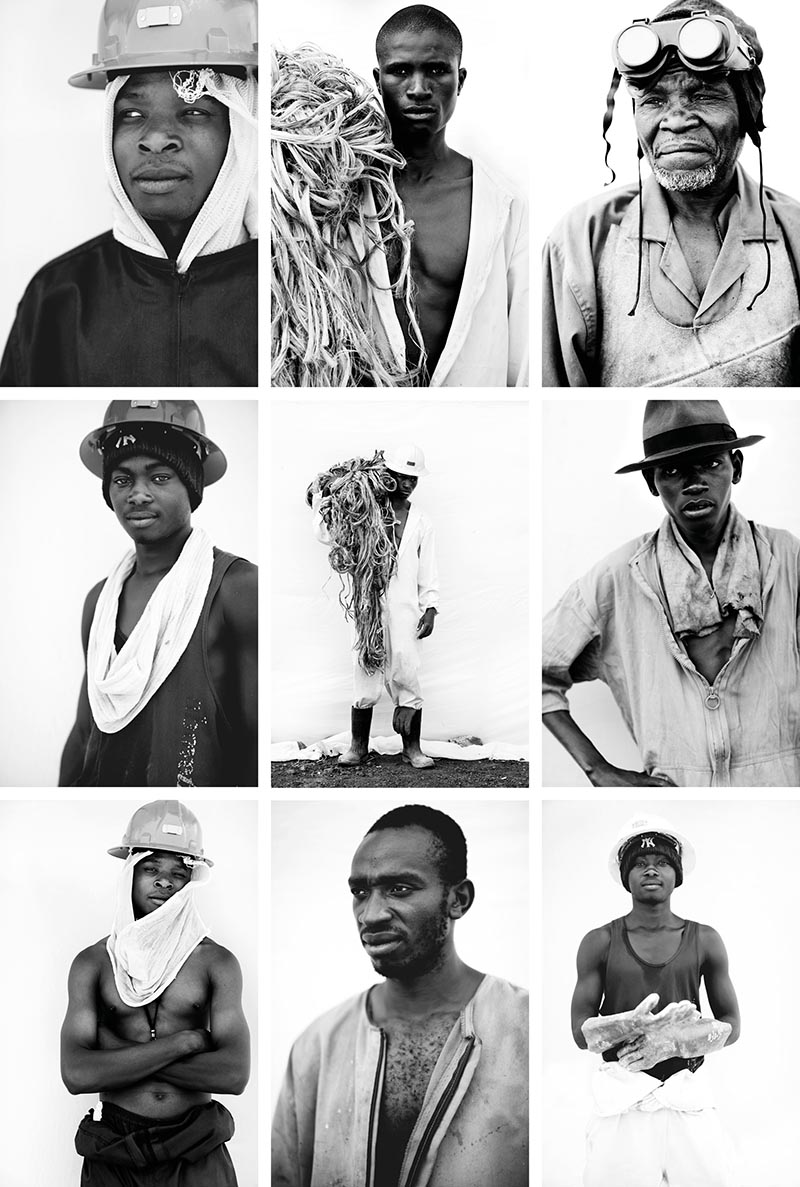
Kenneth Richard: Has it been go, go, go ever since?
Yeah, it has been go, go, go. There were probably 3 or 4 years that were just absolutely hectic. Hectic, hectic, hectic. I’m still as hectic, by all means, but I can be a bit more selective about certain things. So, you know, it’s nice. It’s great. Before, I was young and impressionable. I’d do anything. I wanted to get my name out there. But now, I don’t want to take a picture of a girl in a pink dress with bouffant hair.
Kenneth Richard: Nobody’s looking for a neon look out of Peter Lindbergh. Your body of work, frankly, dictates the reason to call you.
Well, yeah, I get called by magazines that are interested in me as to what I want to do. It’s lovely. It’s great. I can take beautiful pictures, beautiful color pictures, but I obviously love black and white. I love black and white and I’ll always choose black and white pictures over colored pictures, whether it’s a commercial job or an editorial. I’ll always choose black and white, whether that gets me the job or not. Sometimes, I might lose jobs or I might get the job, but it’s nice to be able to go to a magazine that wants me to do 16 pages, beautiful black and white over 2 days or over a day with some beautiful clothes and a great girl. That’s just gorgeous. Great! Never going to fight this. That’s what I’m into. That’s what I’m like.
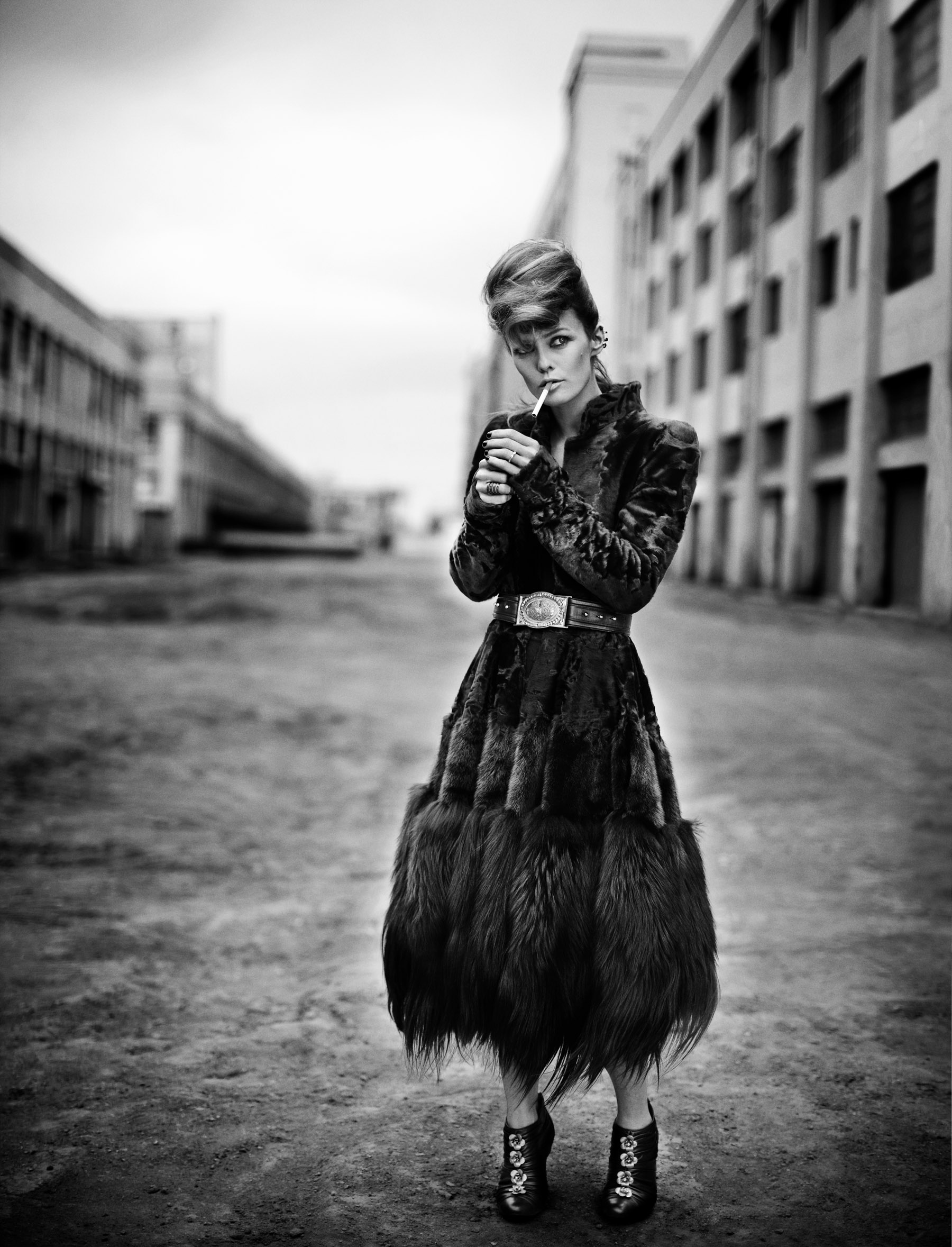
Kenneth Richard: When you look at a picture, what is it that you first notice?
Is it pleasing on the eyes? That’s what I think. It’s that simple. You look at all the iconic pictures like the Marlboro man, pictures of early Annie Leibovitz, they were amazing! Then you look at fashion pictures these days by young people and they’re not that good. I don’t think that young people take great pictures anymore. Like, Bruce Weber’s early pictures were amazing. Peter Lindbergh’s pictures are amazing. Tom Woods’ early pictures are amazing. I think it has to be beautiful, the person has to look good and the landscape has to look good.
Kenneth Richard: Why do you think that is, Boo?
I think there’s this kind of subconscious thing in your head that you light the composition with, you light the things to look nice in the picture. I don’t want the picture to look weird for the sake of looking weird. When I look at an old picture, even though it’s a World War II picture and even though it’s a horrific scene, it’s still portrayed in a very romantic way. I’m not saying to see some German soldiers being dragged up a hill is nice, but there’s a romantic element to it that makes it look beautiful. Even if it’s heavy.
Kenneth Richard: Do you find yourself wanting to check out of fashion to something heavy?
No, not at all. Because I still try to take my photographs in a documentary sense. Look, I love fashion. It pays the bills and it gets me to do lovely things. But when I shoot a cover, a cover’s always going to be a cover. Let’s be honest. You can look at twenty covers of American Vogue and they’re pretty much all the same – they’re upbeat, smiley, you know what I mean? But then you look at Stern magazine – very interesting covers. Because it’s black and white, it’s a bit gritty, it doesn’t have to be upbeat and smiley. But if you’re shooting for certain publications, it has to be a bit formulaic.
So I’m not checking out of fashion at all, I love fashion, because a lot of the time I get a client to do my thing, which is kind of a gritty picture with a beautiful girl, but I can make her look amazing or I can make the clothes look good if I get my own way. The conflict of interest comes when somebody employs me and tries to force me down a different avenue. And I’m just like, well, why do you ask me to do that? I’m the wrong man for the job there, hire someone else.
Kenneth Richard: What makes for a good editorial concept for you?
First of all, if you’re into the girl, it’s so much easier. A lot of times a magazine will say you have to shoot this girl and these are the clothes you have to shoot because of the credits. They’ve pigeonholed everything already. I understand that you’ve got to shoot a key designer or whomever. But let’s make sure I’m interested in whom I’m going to be photographing for the next 20 pages and two days. You know, don’t get a girl I’m not really into. So, first and foremost, the girl.
Obviously, then, the location is so important, because I don’t like to be told to shoot against a white background. I’m not into it. I can do it, but I can’t do it half as well as other people can. I love locations, I love big open spaces. That’s what ignites me, that’s what inspires me. It’s the girl, and then the location.
Then the clothes naturally come with it. And when the magazine says, ‘Let’s do the whole thing in black and white,’ that’s brilliant. That’s half-way there. And if we can get the clothes right, disco.

Kenneth Richard: When you concept yourself rather than somebody else deciding on the girl and the clothes and the location, what’s your process?
For example, I’m shooting this magazine next week, it’s a two-day shoot and it’s a white story. And it’s England, so we’re going to do it inside. So I’ll sit down with my assistant and we’ll do mood boards. Then we’ll go to the location of where we want to shoot. Then we go through the girls. That’s how we do it. And then we put together a storyboard as to what I want to do. I just did a mood board two hours ago for the story I’m doing. I’d give that to the magazine to show the magazine the theme, what I plan to do, the direction that I want to go with this. It’s nice to just show the magazine when you care.
Kenneth Richard: It’s interesting to hear how you approach it because your work tends to have narrative beyond just a girl and a location.
I just think that stories should have narrative. Again, it goes back to social documentary. Things should have narratives. I don’t like stories with just a white background. Even, say, Paolo Roversi, who’s been taking the same picture but doing it a different way for twenty years, still does it with a slight narrative. Obviously the masters of narrative were Peter Lindbergh and Bruce Weber, without a shadow of a doubt. They’re genius. Peter Lindbergh is the master of making a story. Mario Testino is also good at narrating a fashion story. And the reason is, when you tell a story, it makes for a visually better idea.
There’s no point in going here’s Mary in a dress. On the next page here’s Mary in another dress. Here’s Mary in another dress. That’s just boring to me. Because then the clothes become secondary and you don’t even think about the clothes.
Even though I’m probably considered a fashion photographer, I’m not interested in the clothes. I’d rather shoot a girl naked all the time or topless or, like, black suit with a white shirt. But the thing that excites me is if I can tell a story. And then you don’t even look at the clothes, even though the picture looks amazing. And that’s what I find new.
The main thing is that the girl looks beautiful. The main thing is that the clothes look half decent. Katie Grand once said to me, ‘If you can make an apple look beautiful, do it. If you can light an apple, you can light anything.’ I think if you can make an elderly woman look beautiful, you are a good photographer. But there are some young photographers nowadays who are not making the women look beautiful, even these young girls. Because young girls, when they’re 19, they should look beautiful. If Bruce Weber, Peter Lindbergh, Mario Testino, Irving Penn or Richard Avedon took that girl’s picture, then she’d look beautiful. But they’re photographing her from below and looking at her crotch. Where you’re just like, ‘Uh. Jesus Christ.’
Kenneth Richard: Sure. As far as other parts of the process are concerned, do you work a little bit on layout yourself?
I try to, yes, as much as I can. But then, again, you don’t want to be stepping on the art director’s toes in the magazine because they get a bit pissed off. But it’s refreshing for a young photographer or any photographer to be opinionated because it’s their pictures.
Kenneth Richard: How involved are you in the technical side in post?
Very much involved. But before you even get to that stage, I love movement in my pictures, so I’m in a desert in LA and it’s sunny, but I want to have the wind blowing. I like to be able to control all that. So back to the technical question, before we get to the post, I’m already altering what I’m seeing in front of me, because I know I want to be able to see the wind. But it’s sunny in LA, so I’m going to have very quick shutter speed, and I’m also shooting wide open, so I’m shooting at 1.2. So if I do a picture of a girl from the waist up, half of that is going to be out of focus, which I love, I love the focus to be on the subject matter. And I also love movement, so I love to use a wind machine and a bit of smoke. I love if the hair is blowing backwards, that’s what I like.
Now, going into post, I’m there 100% because at the end of the day, especially with editorial, and the advertising jobs that I really really love, of course I’m going to get involved. I’ll sit there with my retoucher and see if we can make it more grainy, more grubby, if we can make it a bit more vignetty, if we can bring in more contrast or more movement. Especially with editorial, because with certain magazines, you’re given free range. When they tell me to ‘do what you want to, dude,’ I go for it.
Kenneth Richard: Are you working on any personal projects?
I’m just doing my first book as well; that’s kind of what I was working on. Just stuff that I like to photograph, boxers and ballerina dancers and so on. It’s my first book so it’s kind of like a toe in the water. That’s all at the end of this month. That’s what I’m at and then hopefully in May, I’m going to go to Argentina to do my second book. But I want to wrap up my first book first, if you know what I mean.
Kenneth Richard: Right.
So that’s the plan. It’s being self-published as well. I’m actually giving it away.
Kenneth Richard: Oh, how come?
I’m only printing 250. It’s my first book, I want to give it to people I’ve worked with and for and people who I like, basically.
To be honest, I didn’t want to start publishing a book because I was afraid it wouldn’t do well. When you’re publishing a book, it has to go through certain windows, it can come out two times a year. So I thought I would fund the thing myself, print it myself and give it to 250 art directors, magazines, stylists, hairdressers, and people who I’ve worked for. I’m not selling them.
Kenneth Richard: Sounds great. What was the experience like of putting together your first book?
It was cool. It was very cool. It’s a different process. It’s not like you’re doing a story that’s 16 pages and then done, next. You’ve got to sit down. It’s a bit more methodical. Obviously, when it’s a book, you’re looking at probably a hundred pictures, so you have to kind of digest it. Then you’ve got to go to the printers and see the first run, see if it’s right, if it’s not. If it’s not, is it too black and white? Is the layout right? Do I need more breathing space when I’m looking at the book? Because 100 black and white pictures that are all quite gritty, grimy pictures is quite hard to digest in one go, so, do I need two white pages a third of the way into the book? Things like this are all things you need to look into when you’re doing it and I’m doing it myself. I didn’t get an art director to do it so, you know, you’ve got to get your head in with you.
I’m printing at a place in London, which is great. It’s nice when you can come back and physically see it. Especially because it’s my first book, I can physically get on it.
Kenneth Richard: Especially with your sense for coloration and grit and grain, you want to be on press. Looking forward to seeing your book. So, what excites you these days?
Oh, all matters of books. Knowledge is power. All matters of books. I have a huge library, which is great. So, I get to look at books every day, look at that kind of stuff. I obviously love documentaries on the television. All that kind of stuff. Love World War II. I love traveling. I love meeting people, I just love talking to people. I love going to the pub and meeting new people. I love the west of Ireland. I love London.
I’m into a walk in the hills and I’m into looking at the trees, but it’s not in some hippy dippy way. I’m into my house in Ireland, I’m into talking to people who aren’t into fashion. I love going to Ireland and talking to the farmers, talking to sheep farmers, going out with the fishermen, going lobster fishing and just talking normal talk.
The place is quite beautiful; it’s idyllic. The house I bought is overlooking the Atlantic. If I had a really strong pair of binoculars, I could probably see New York. It’s amazing.
I just like going home and not thinking about fashion, just walking the hills, making my food, walking the dog and just chilling in the cold, meeting the farmers, getting drunk. Drinking whiskey, swimming every day. Shooting the shotgun and not having to wash for like a week. It’s like heaven. [laughs]
Kenneth Richard: It sounds like heaven.
What more does a man want? It’s a very nice balance. You can’t have it one way or the other. I need Ireland. I need London to exist and earn money. I need to go to America to earn money and meet cool people and then I need Ireland to go over and chill out. Then when I’m in Ireland for too long, I’m like, get me out of here, I want to go back to New York, I want to get back to London or I want to go to South America.
Kenneth Richard: Sounds like the best of all worlds. Boo, thank you very much. It was a pleasure to talk shop.
I’m honored. Thank you very much.
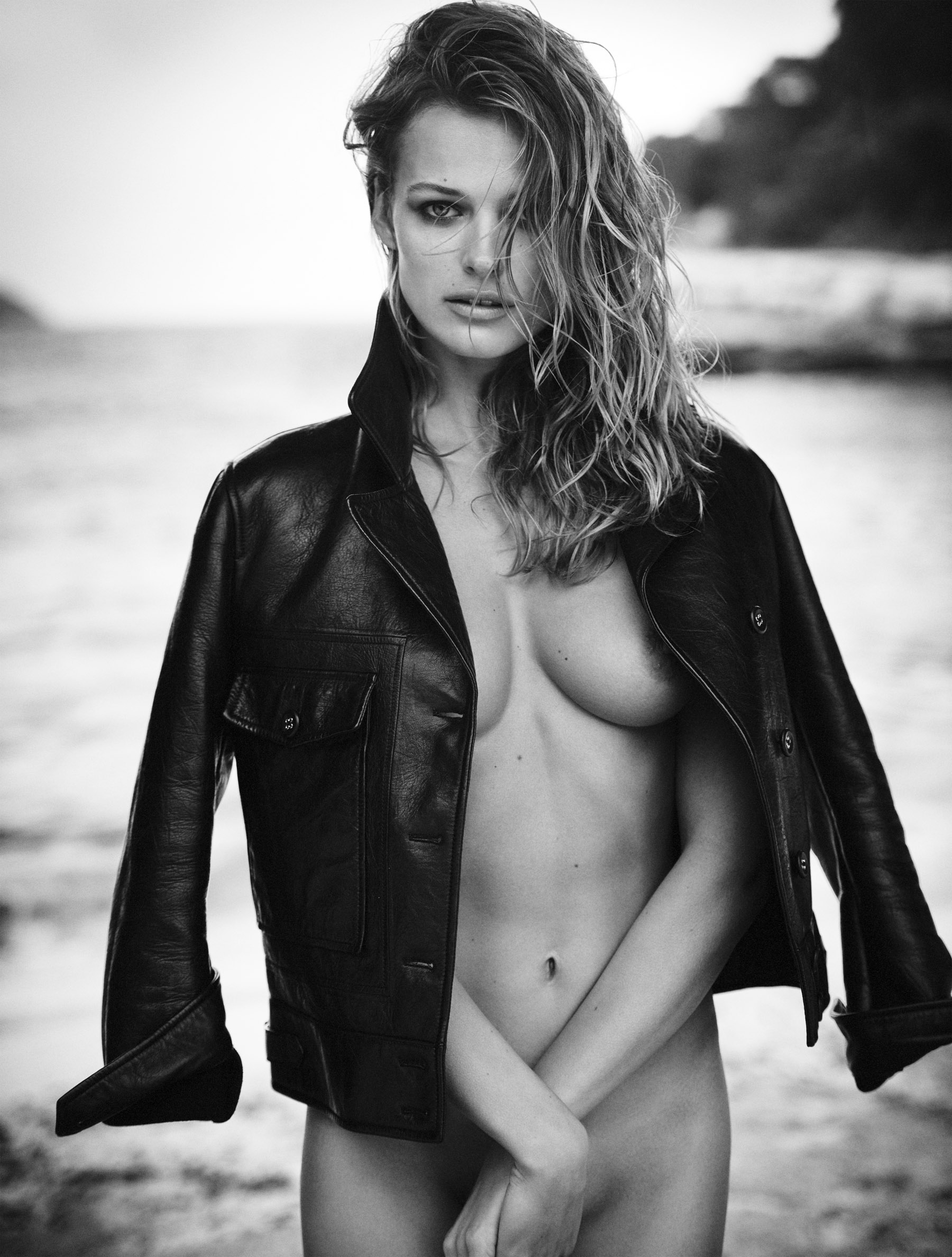
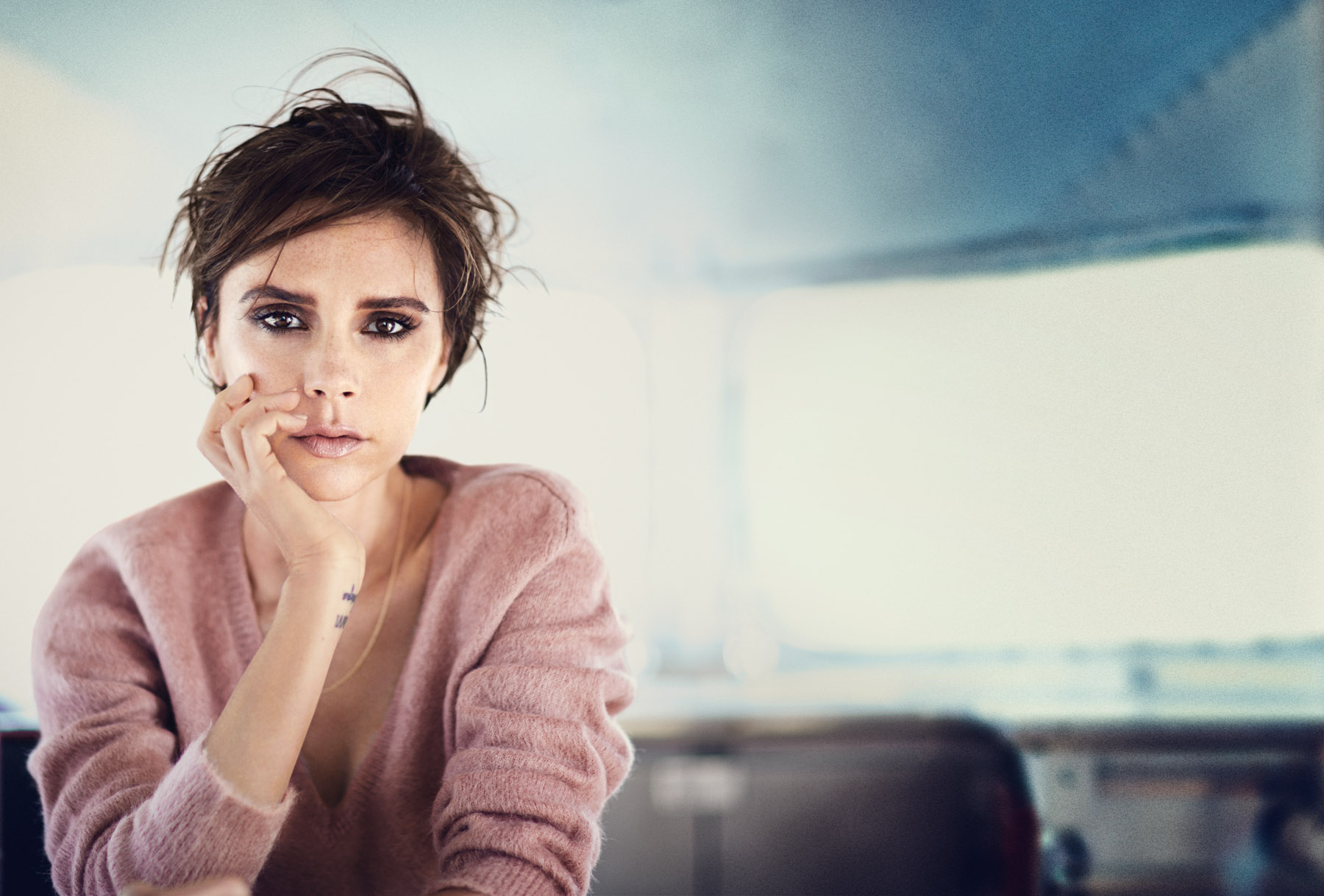
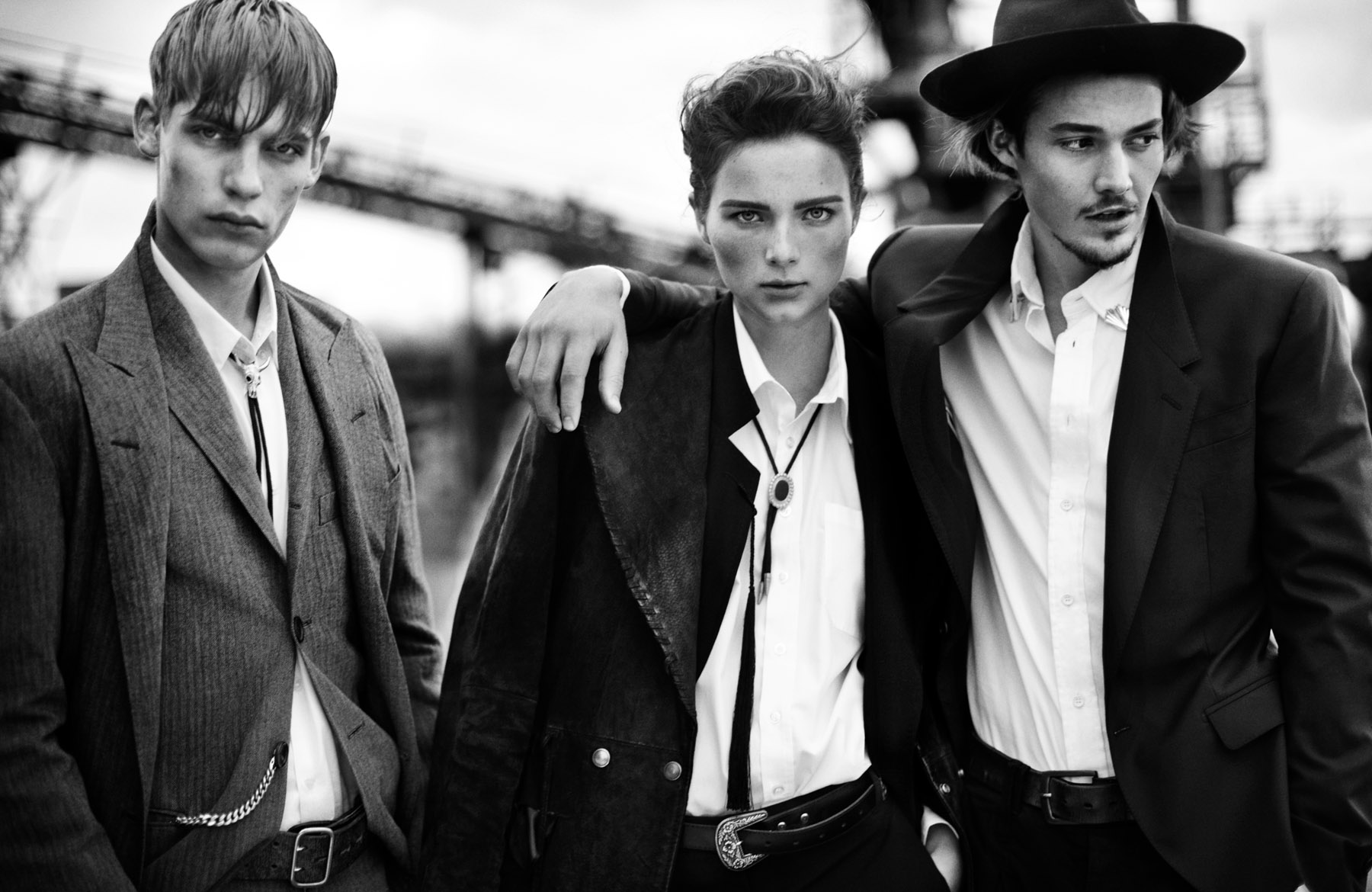
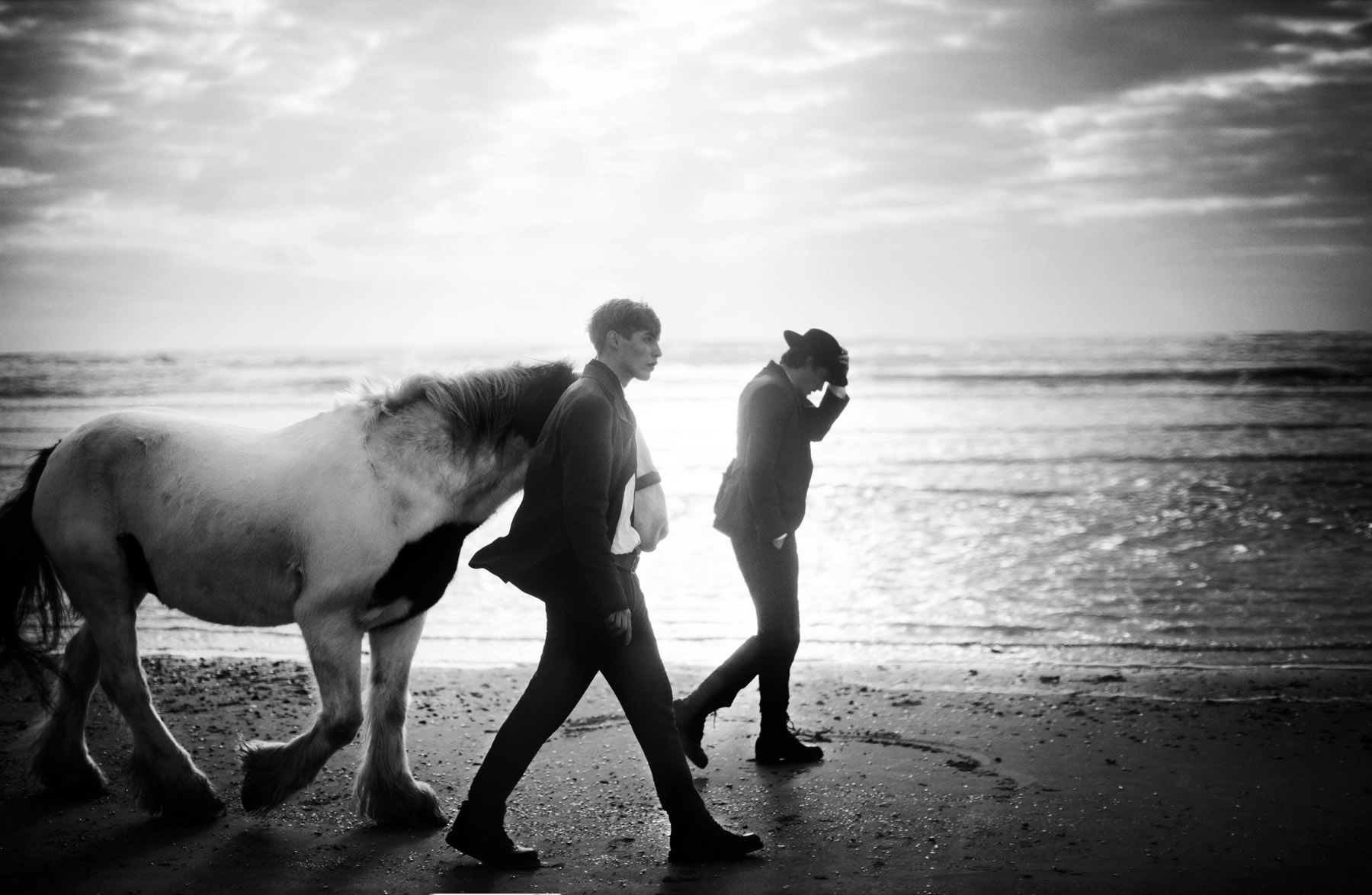
Images Courtesy of Boo George Studio
